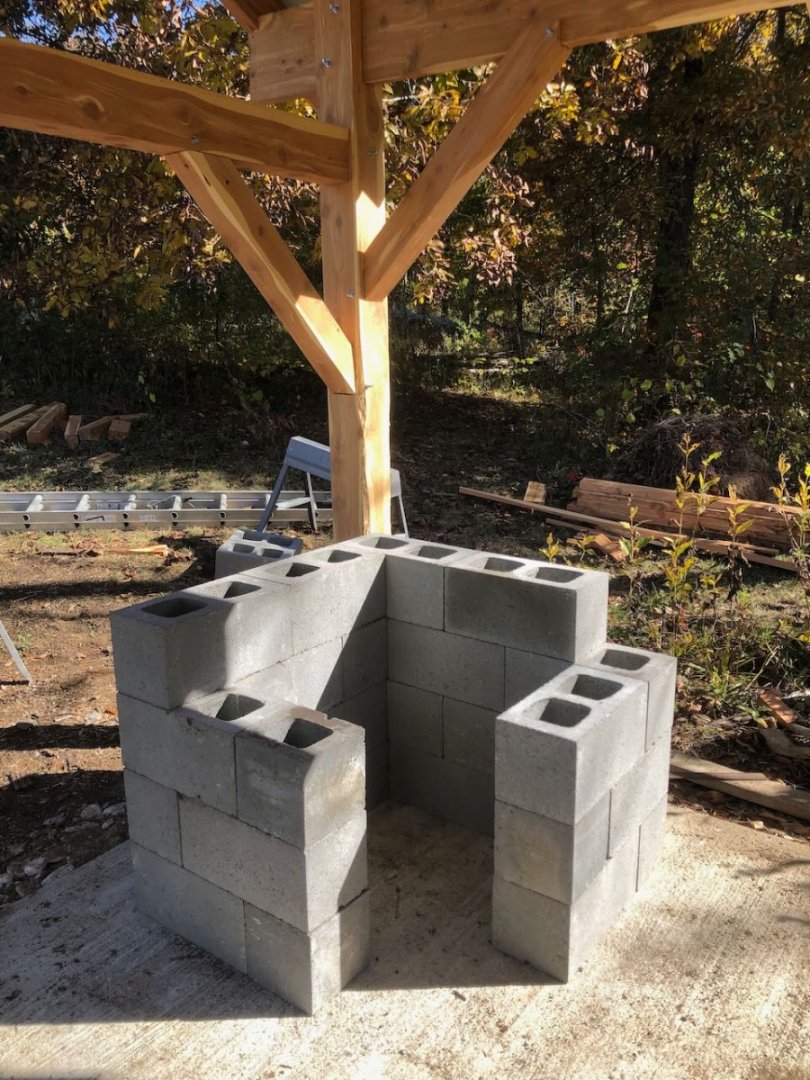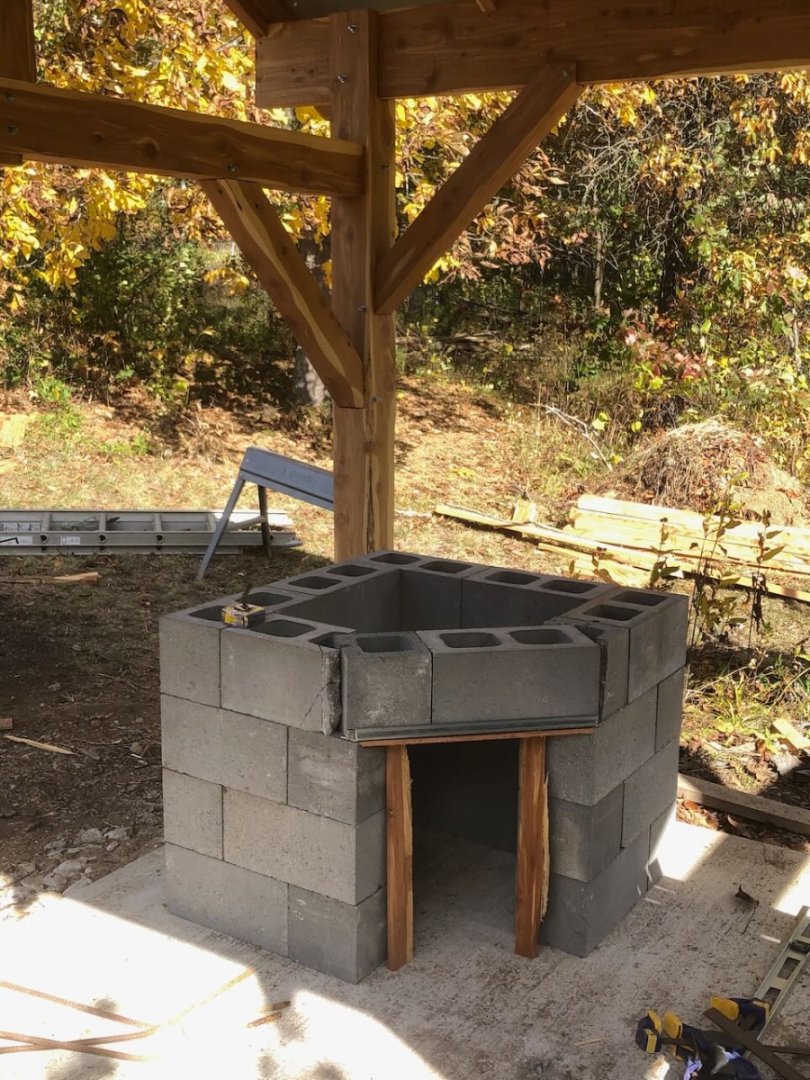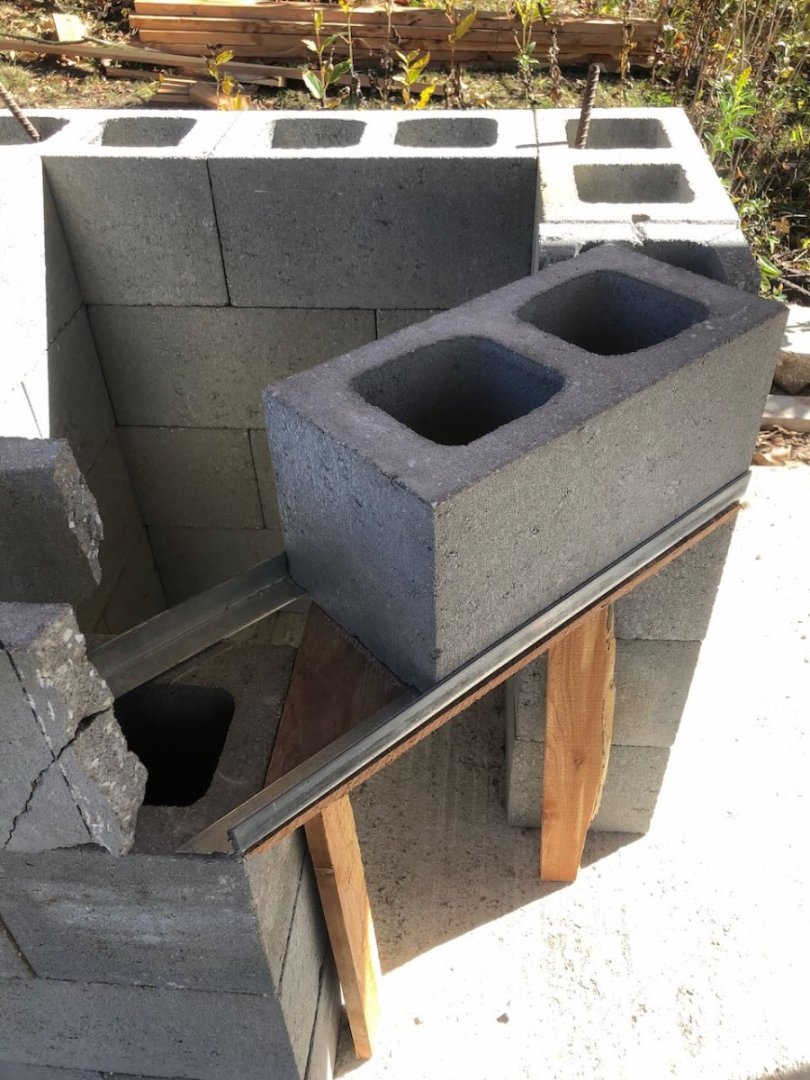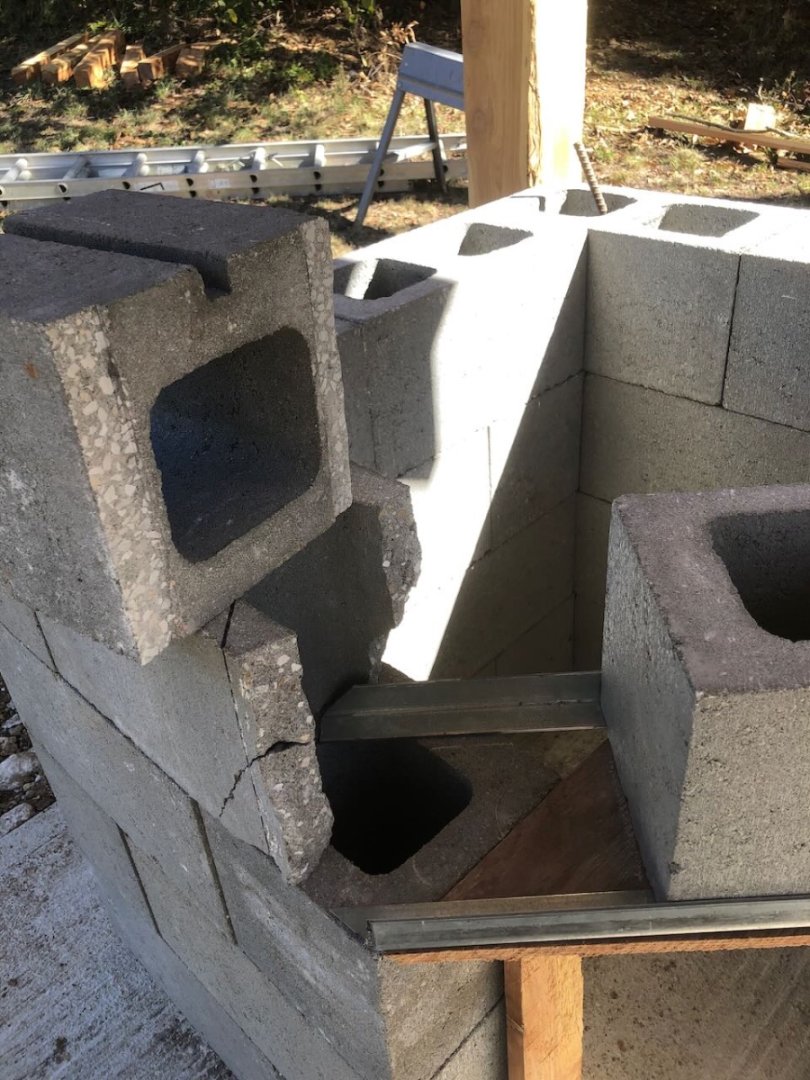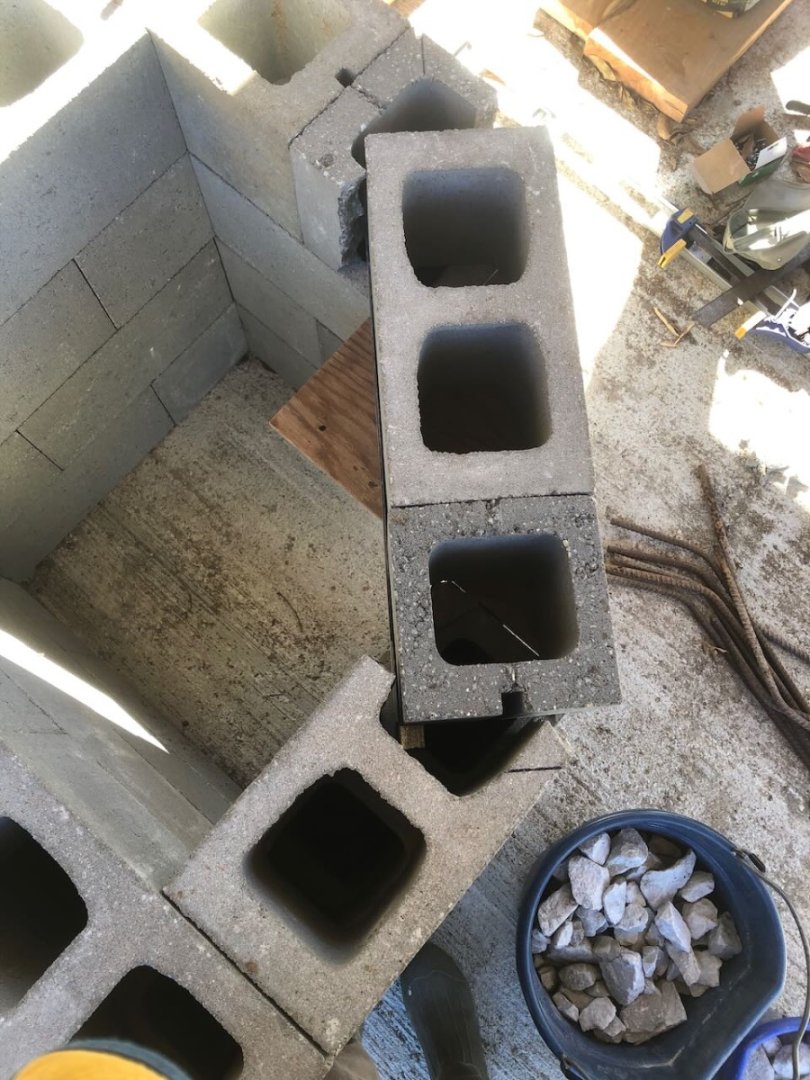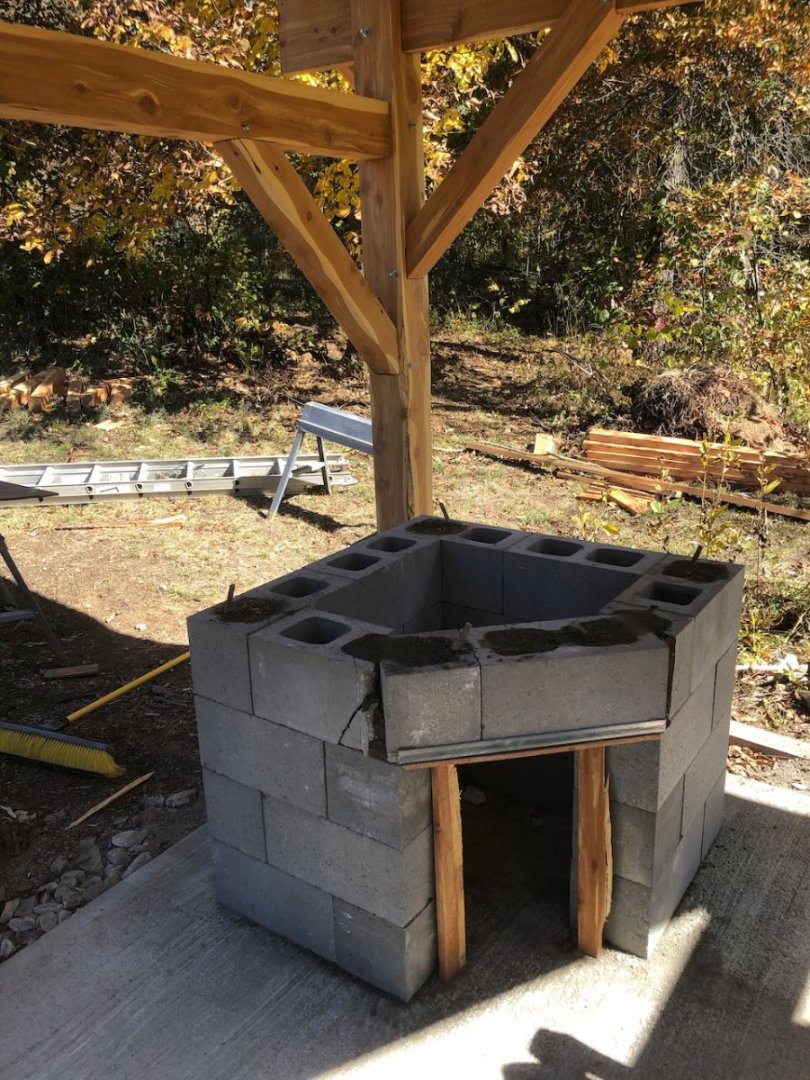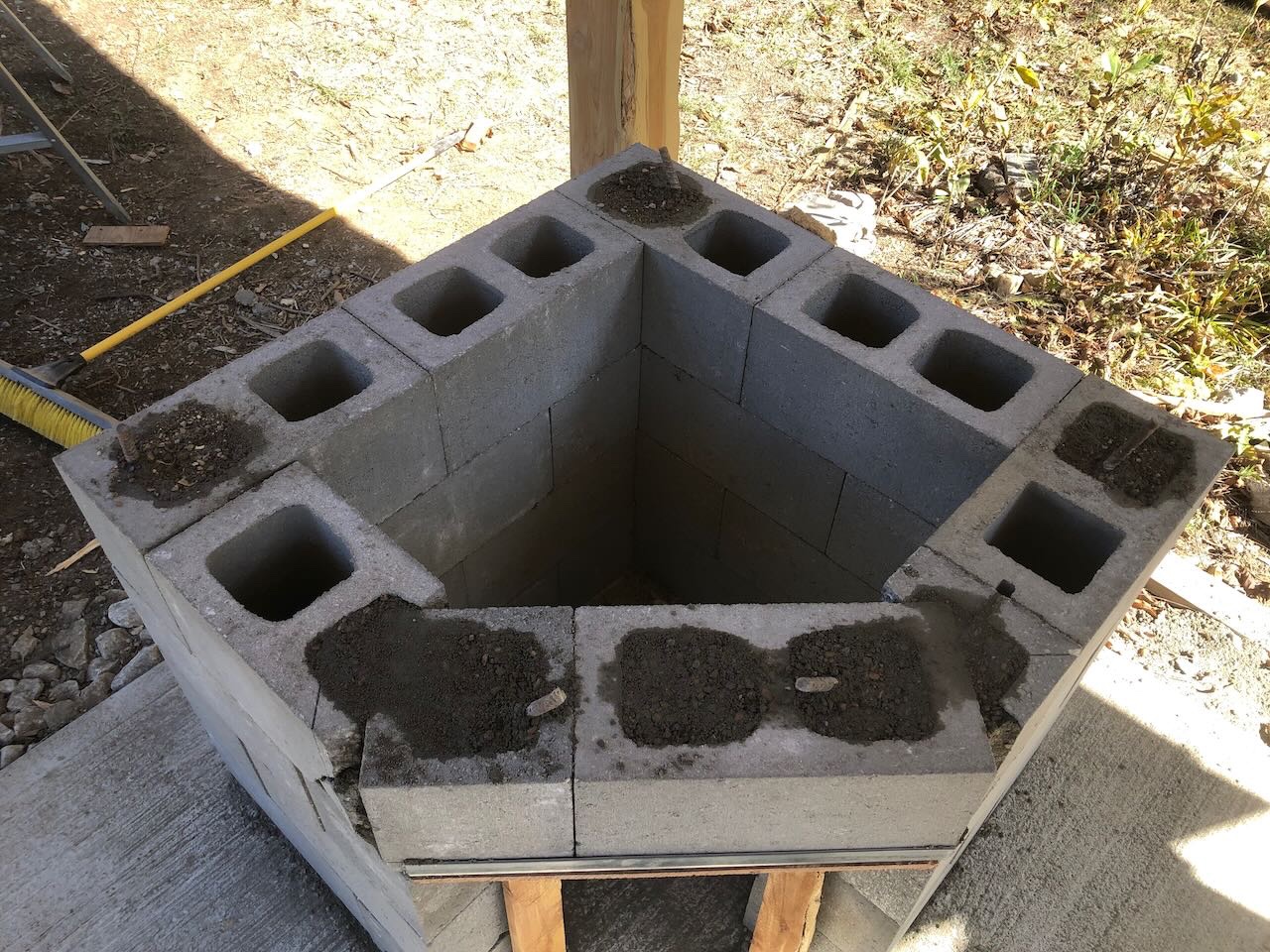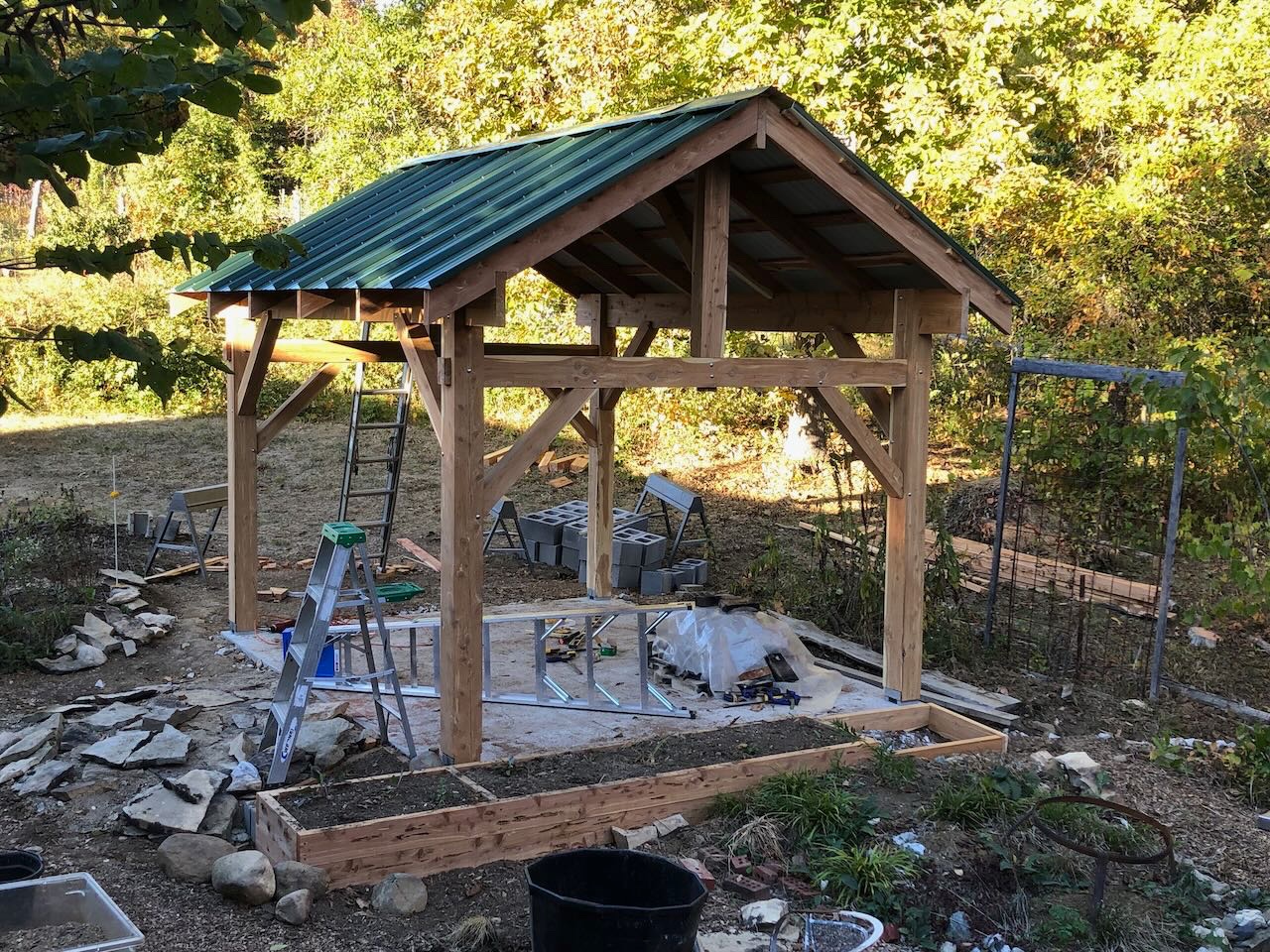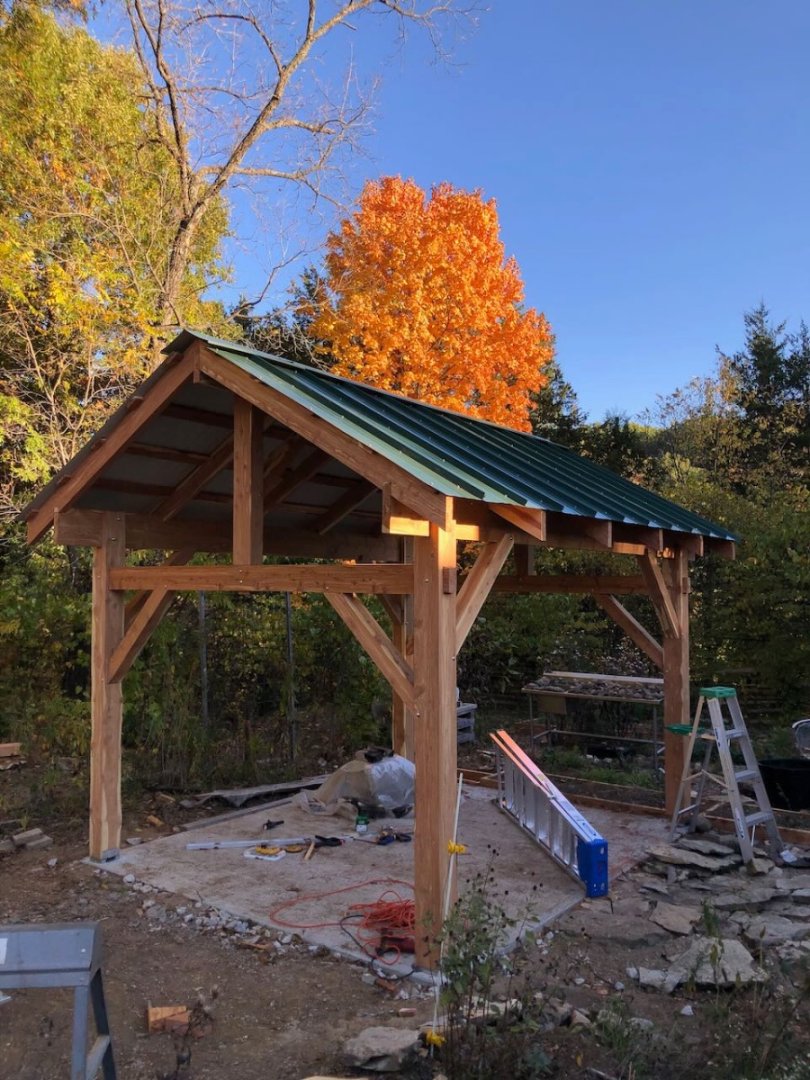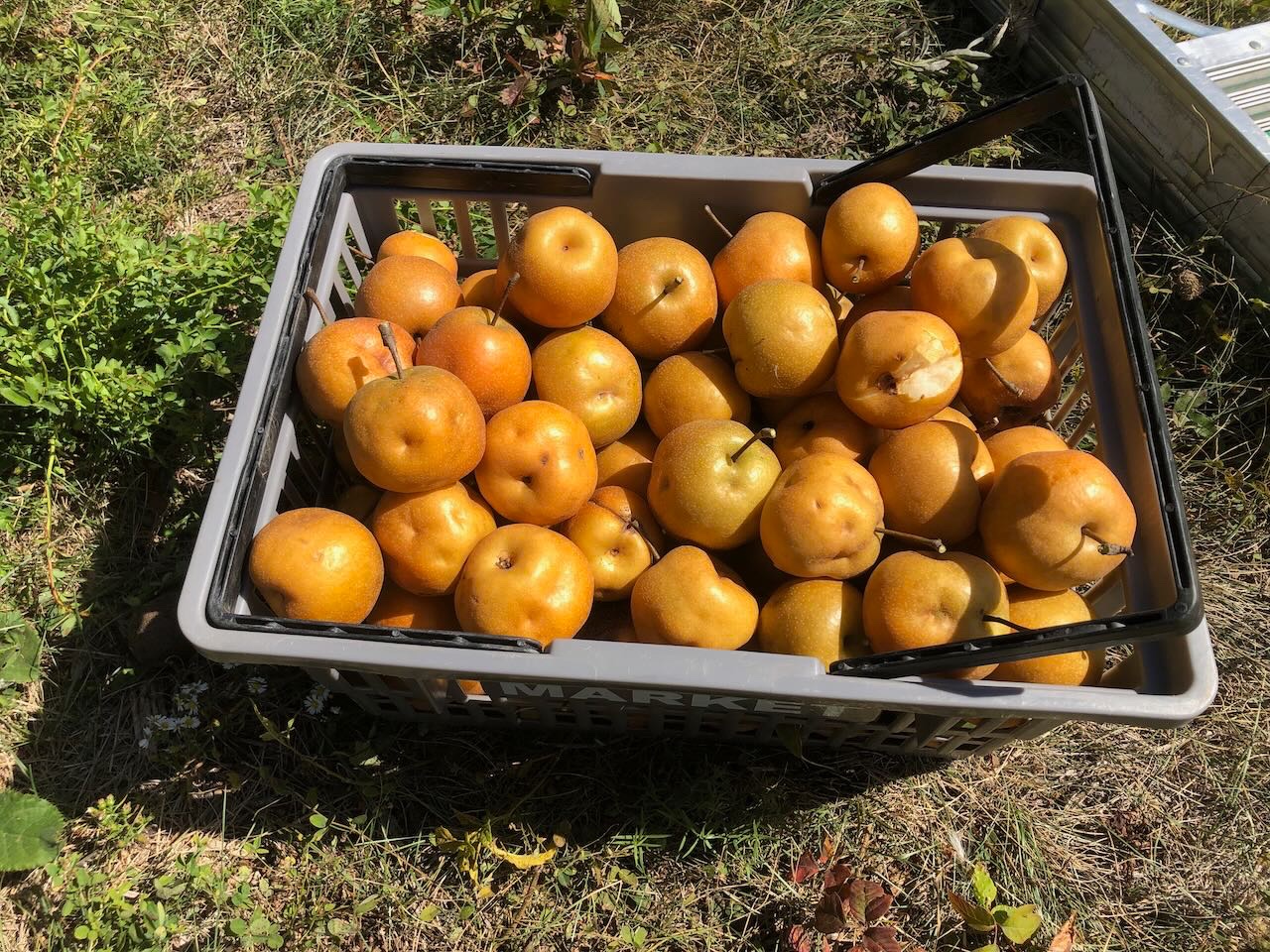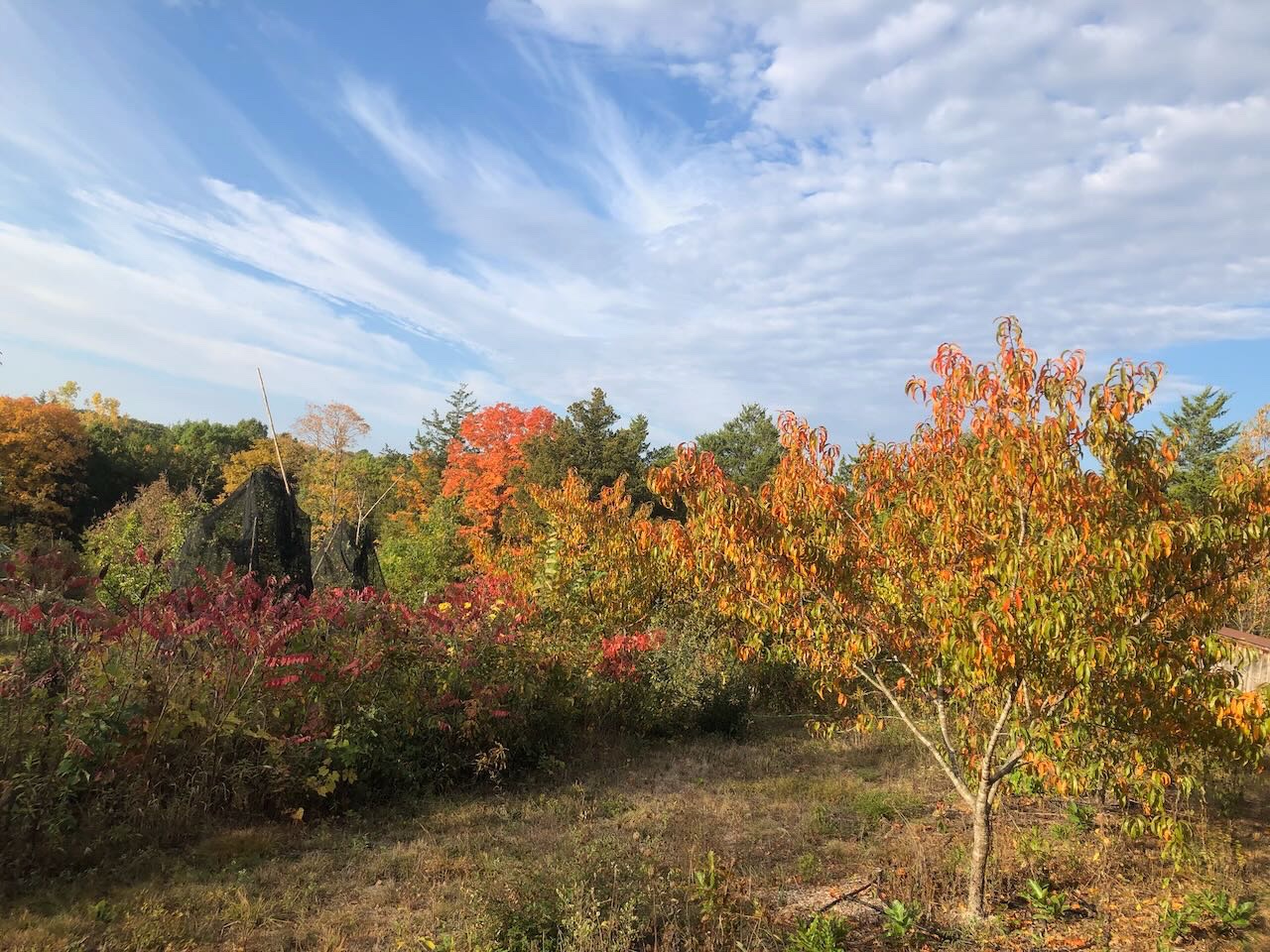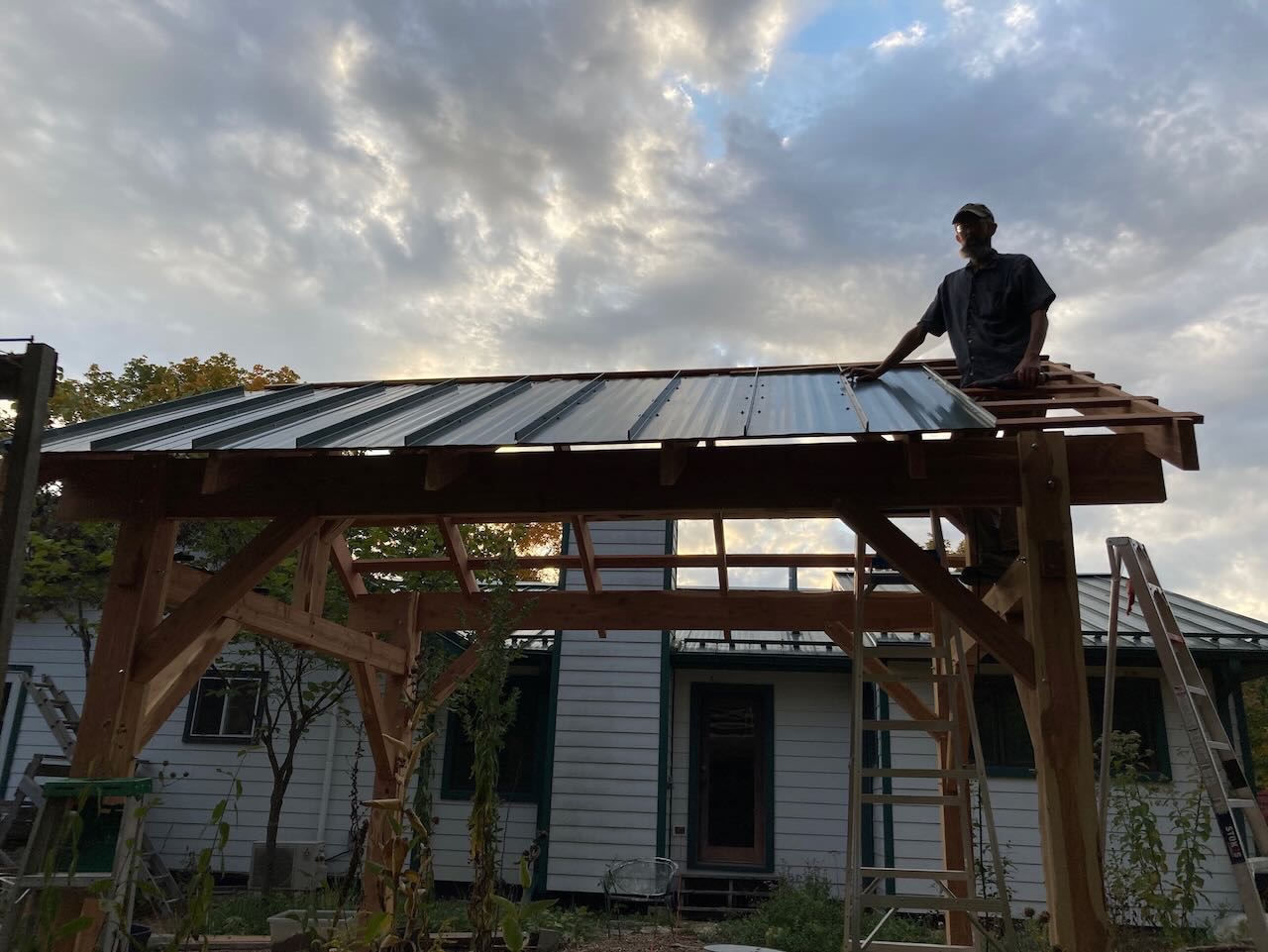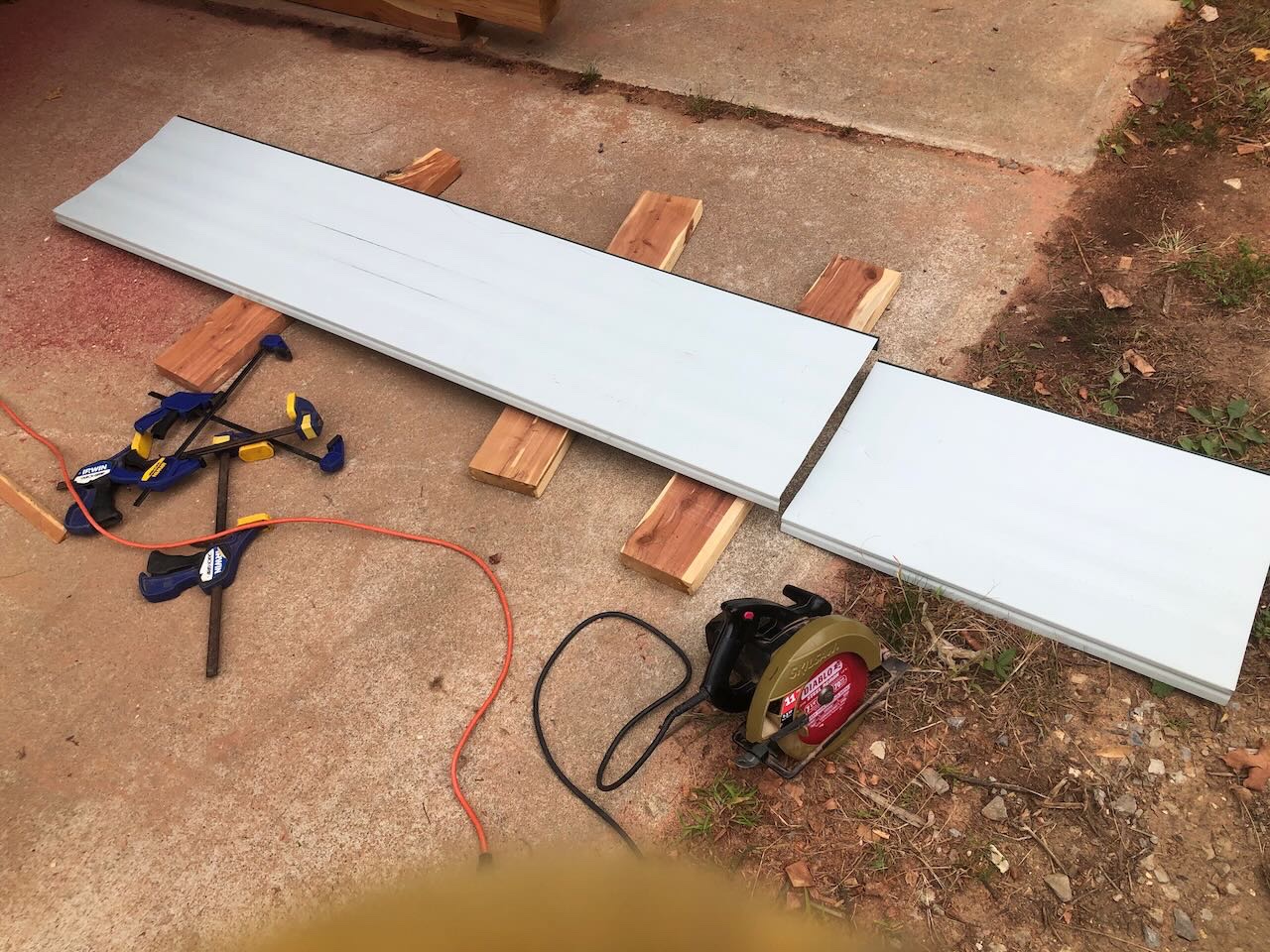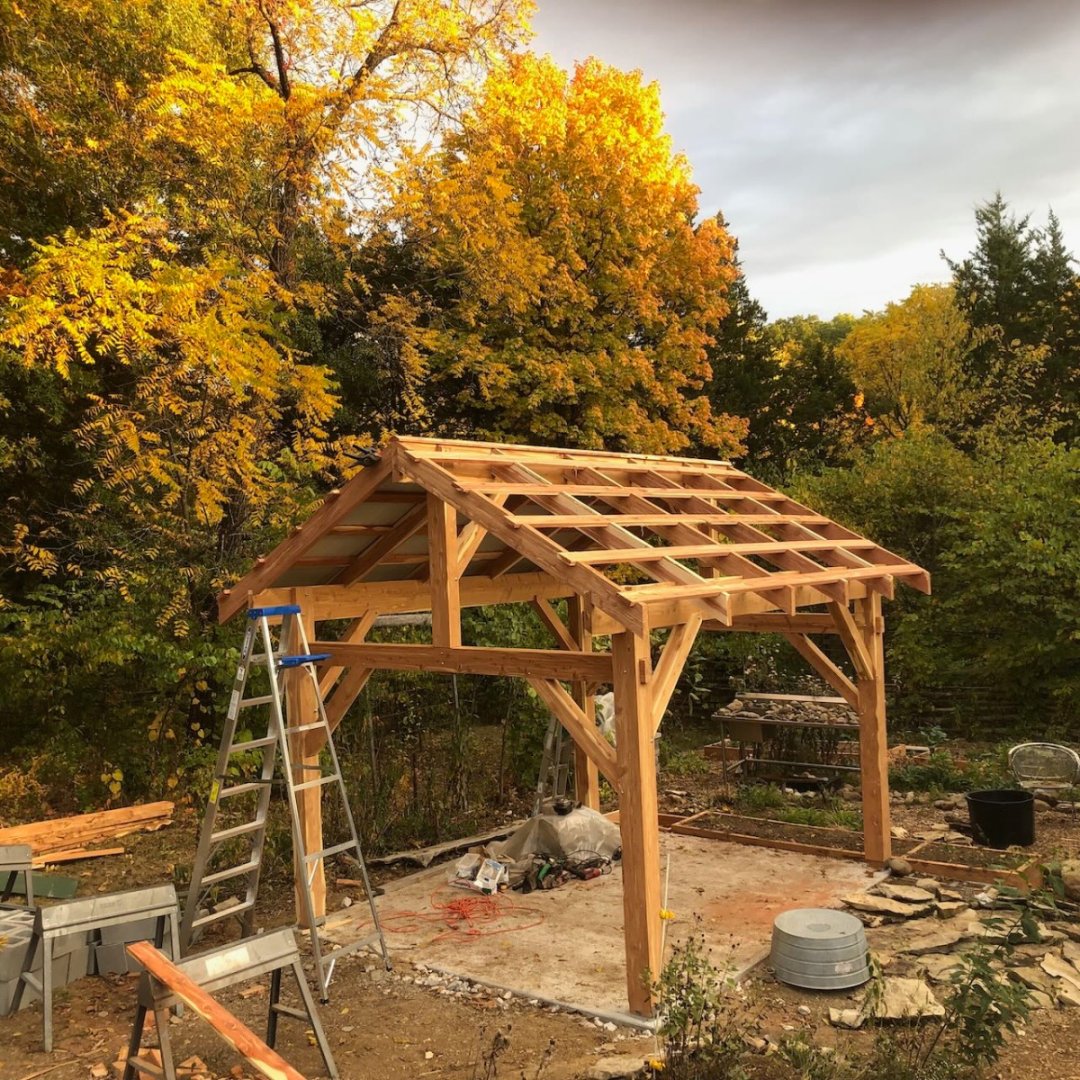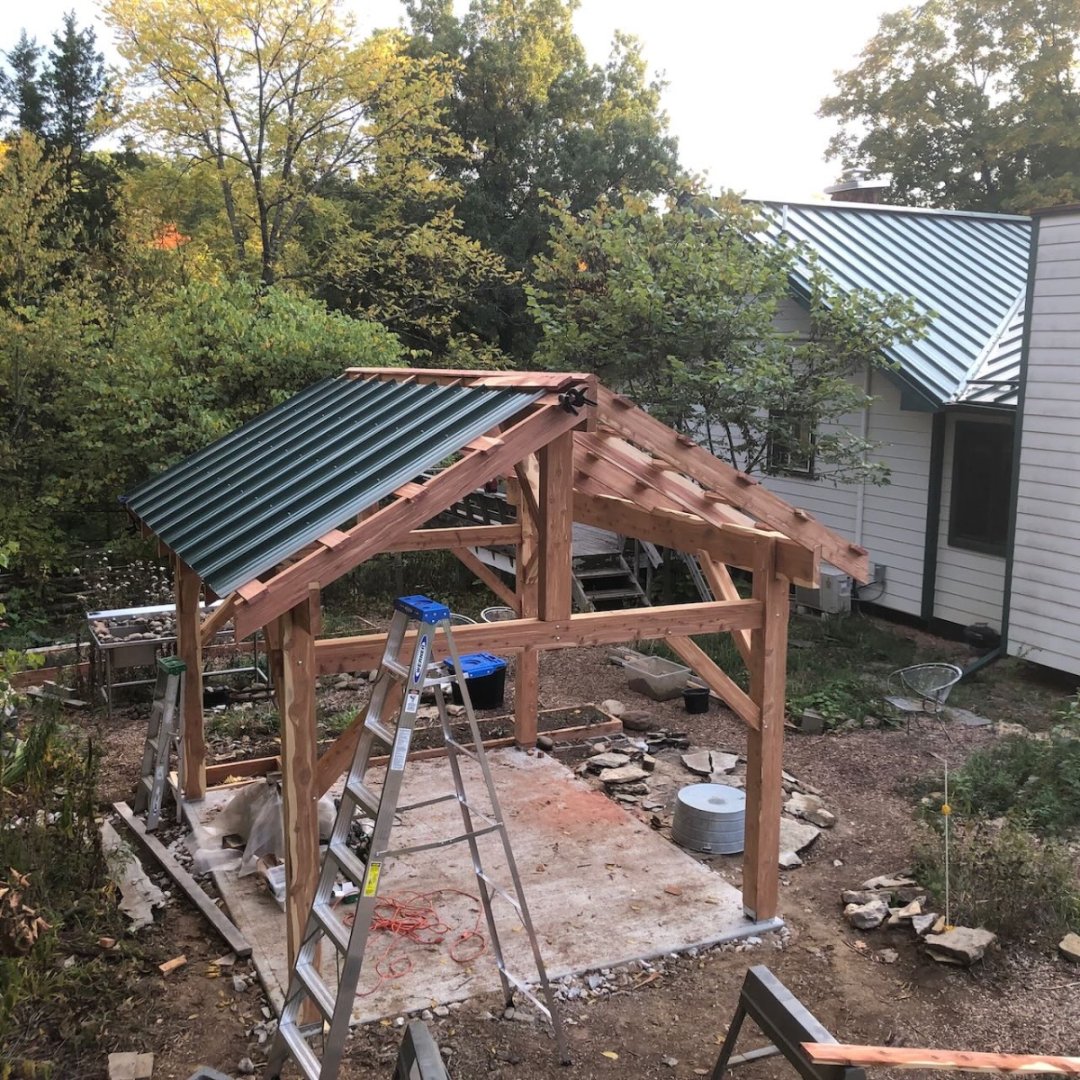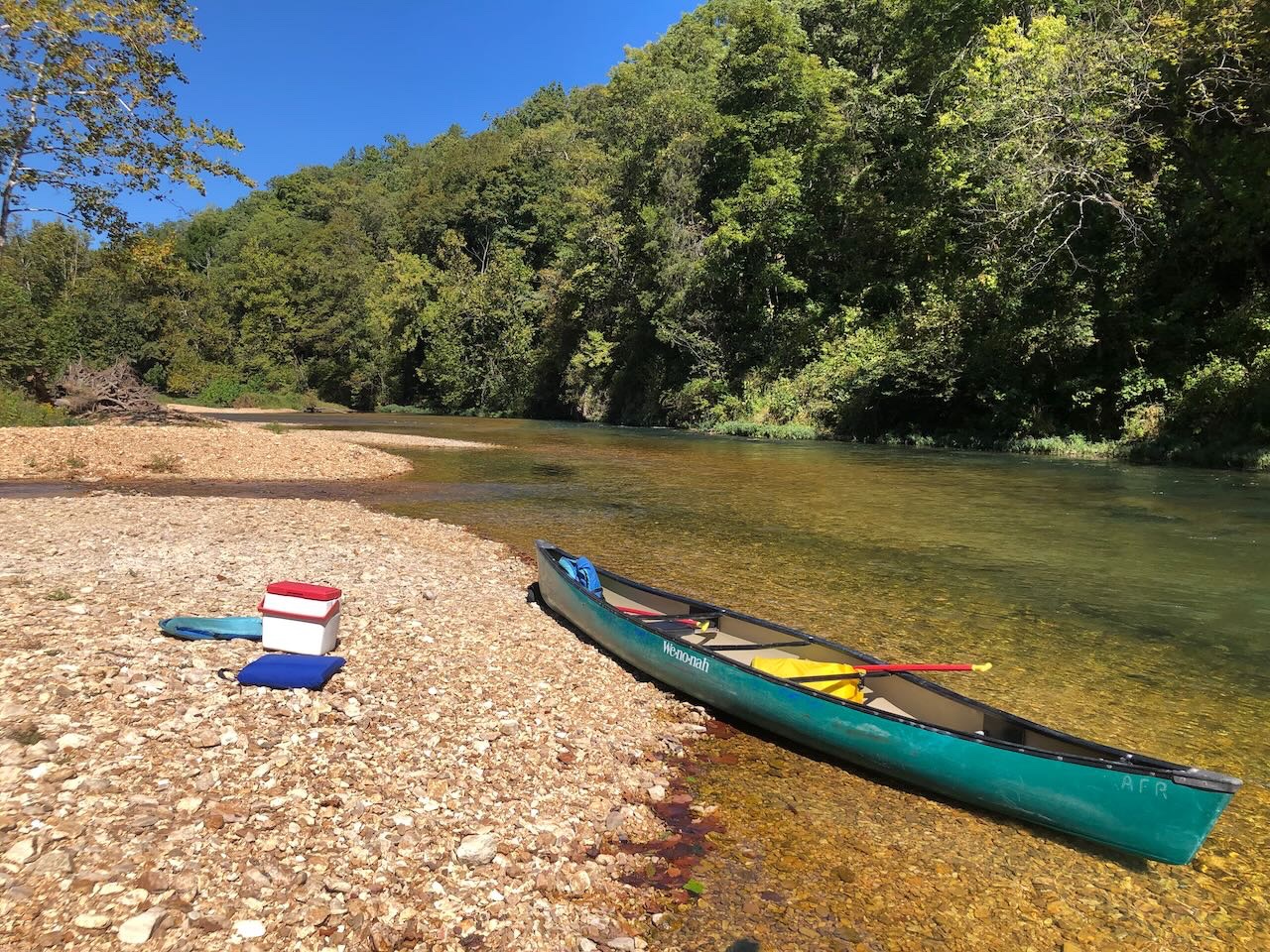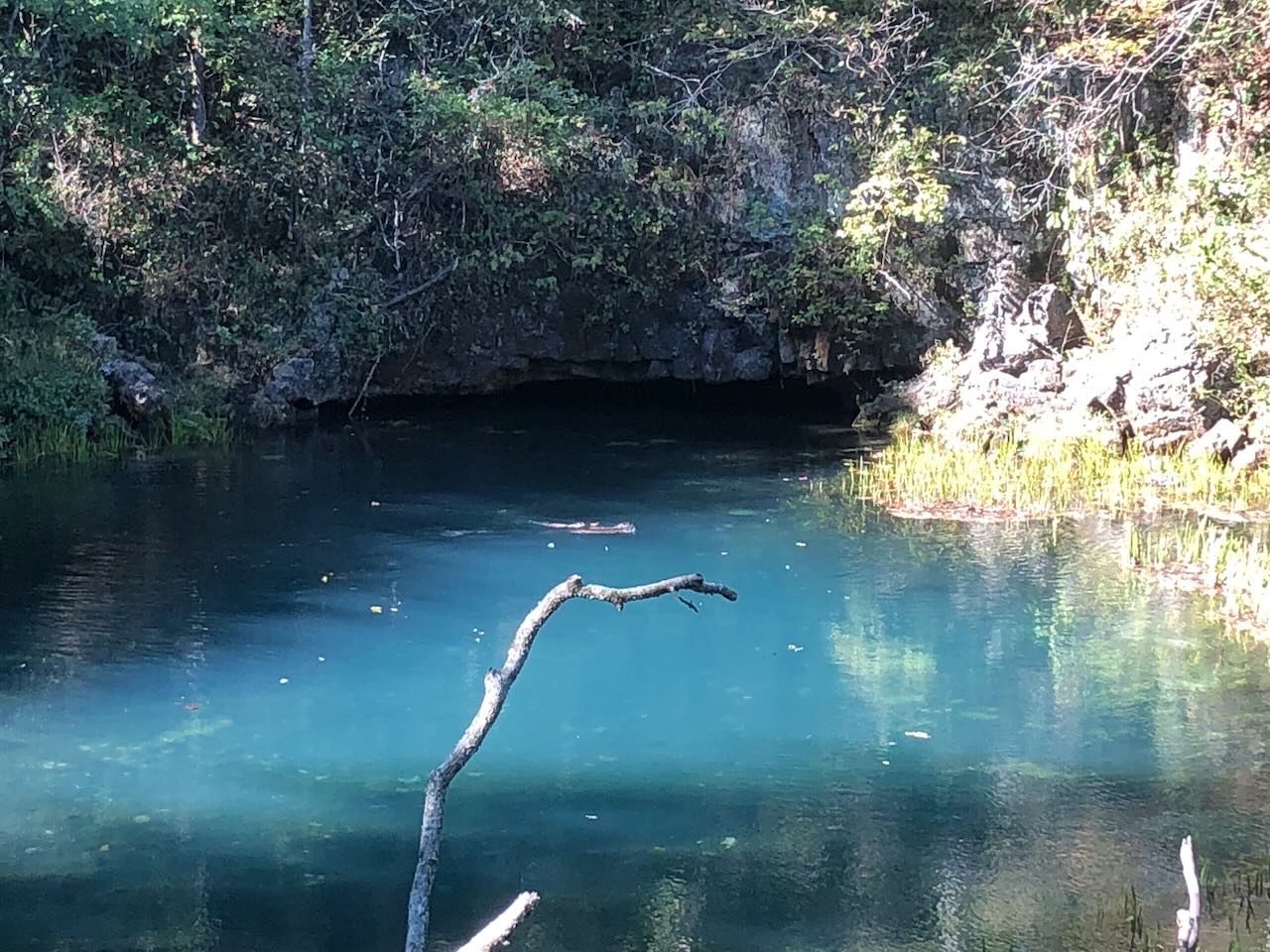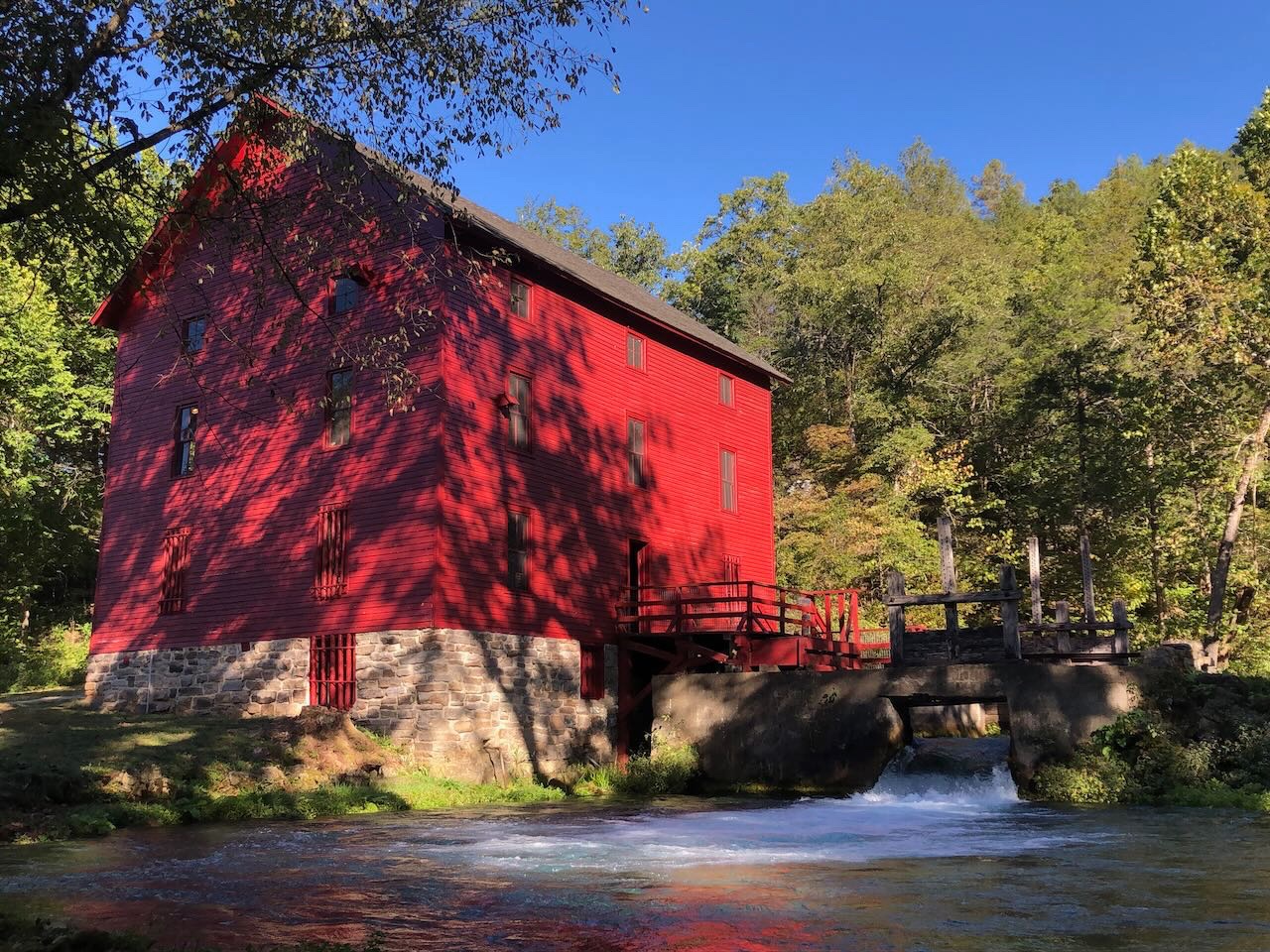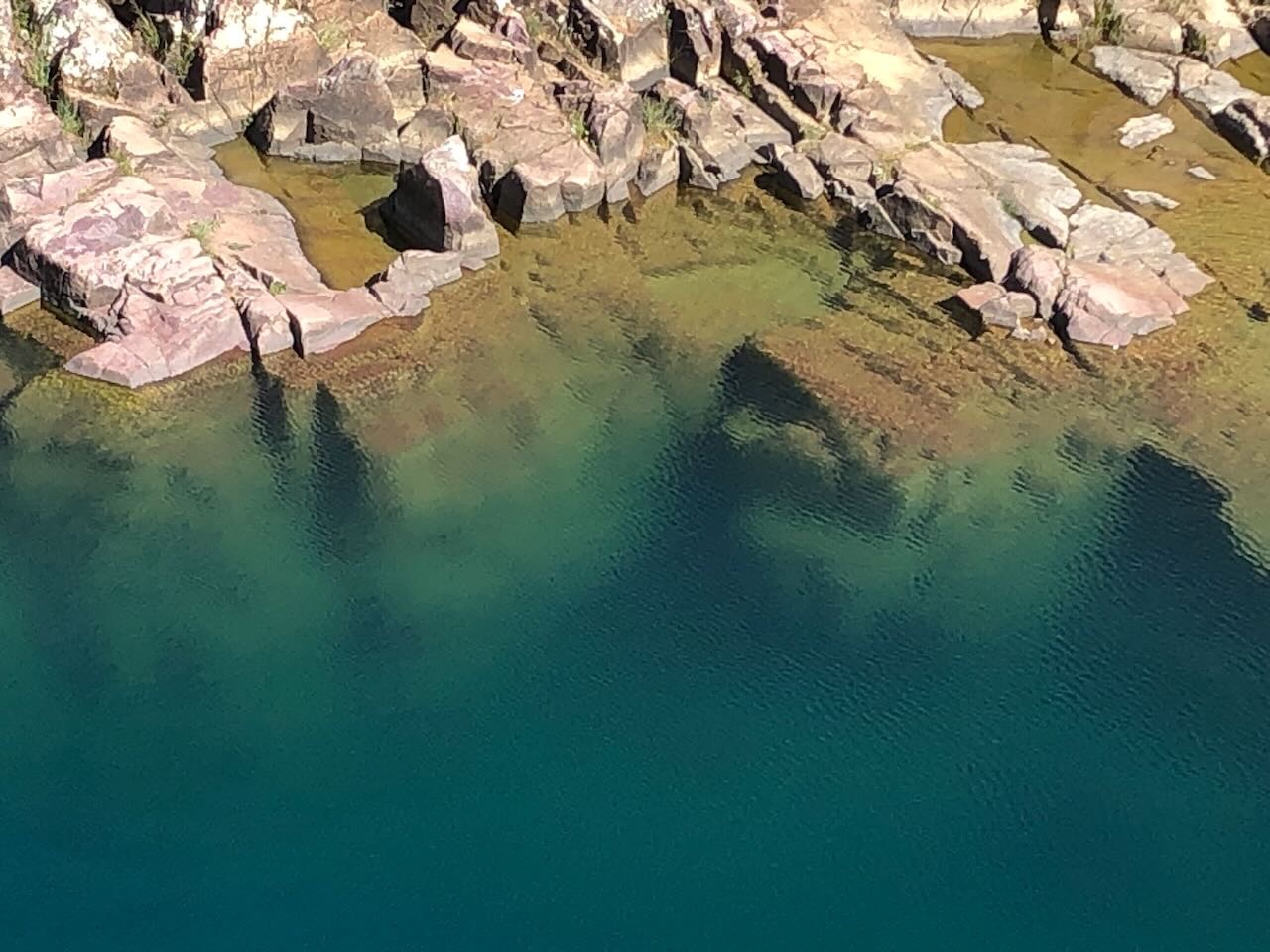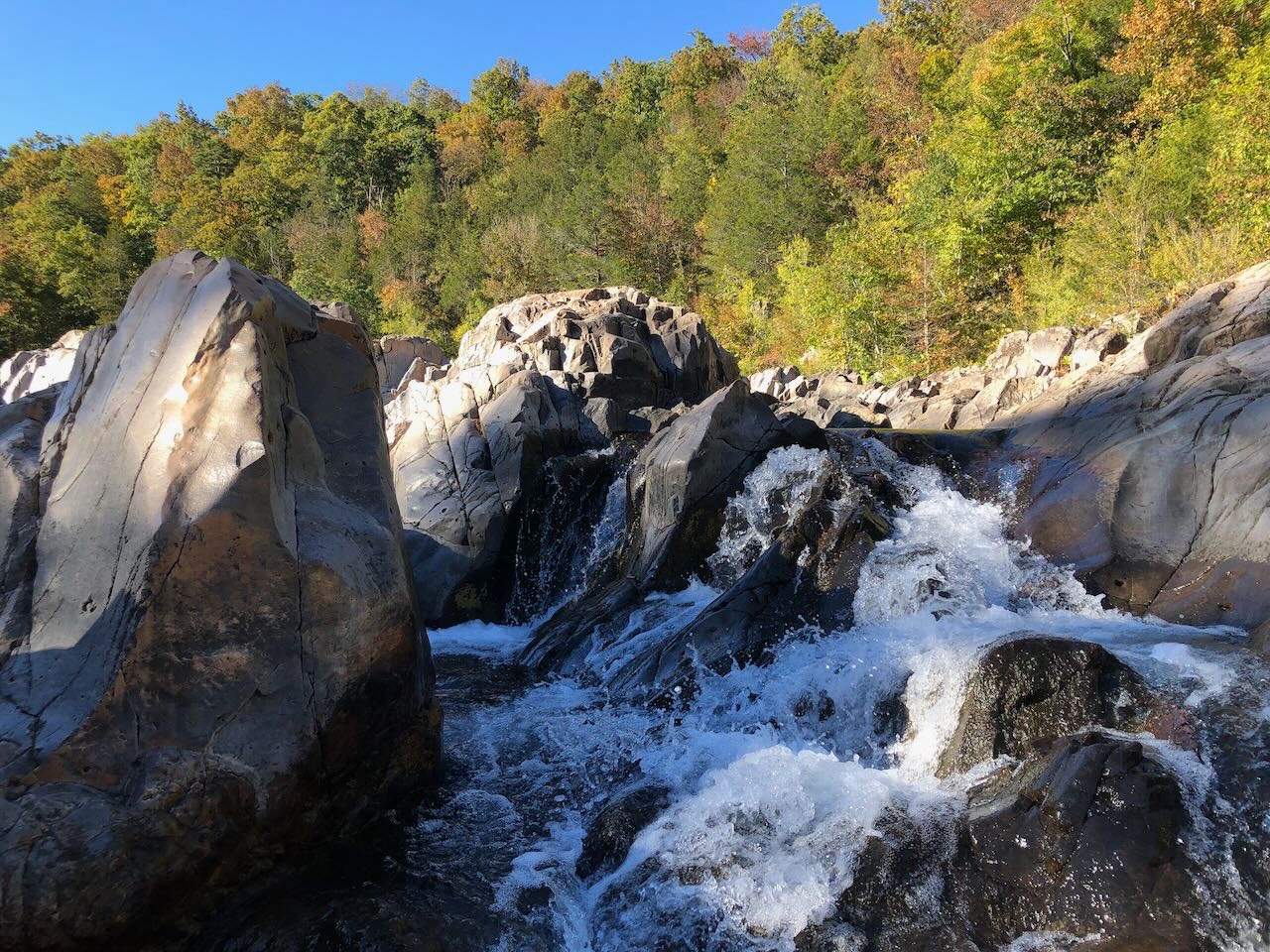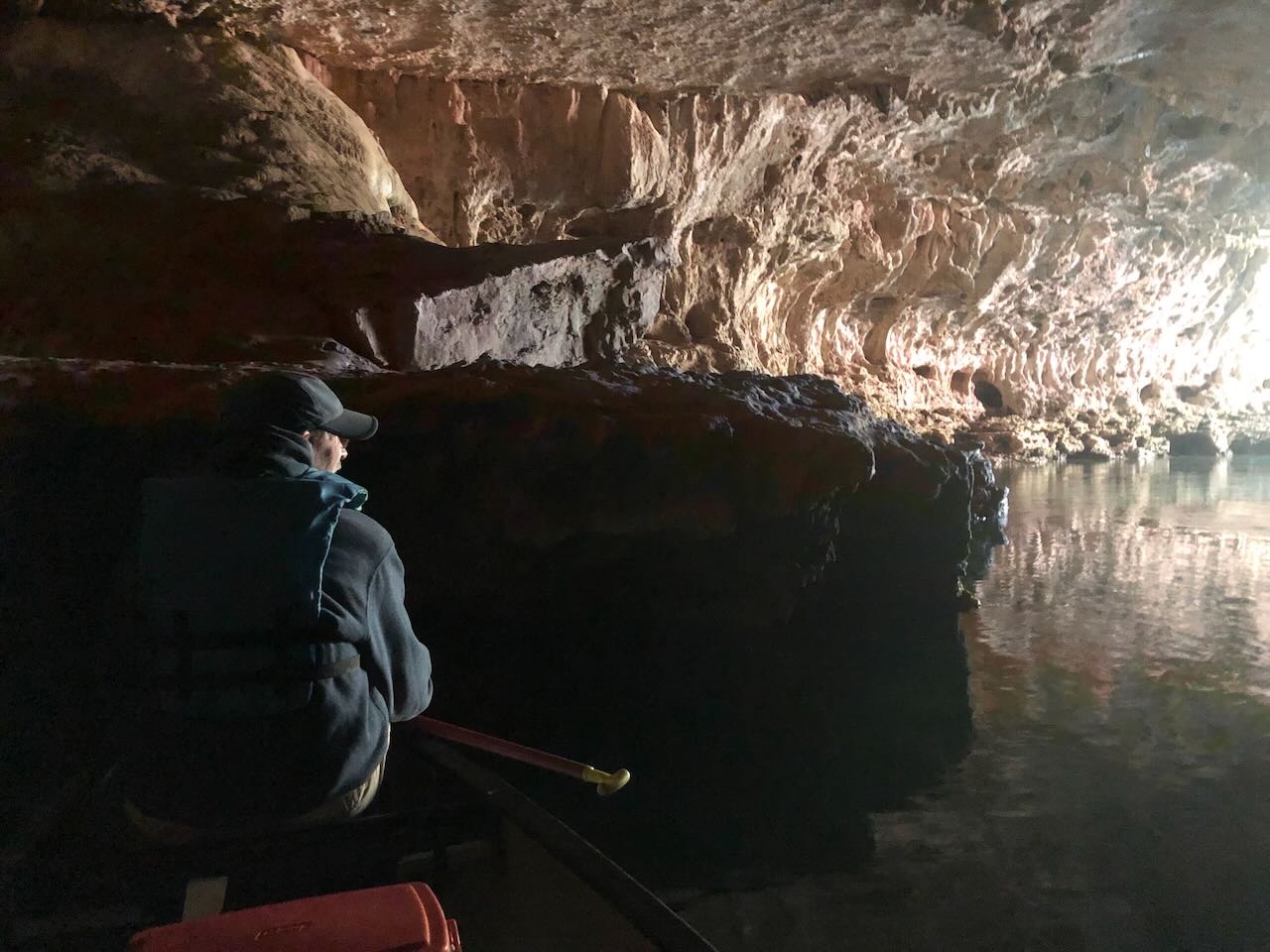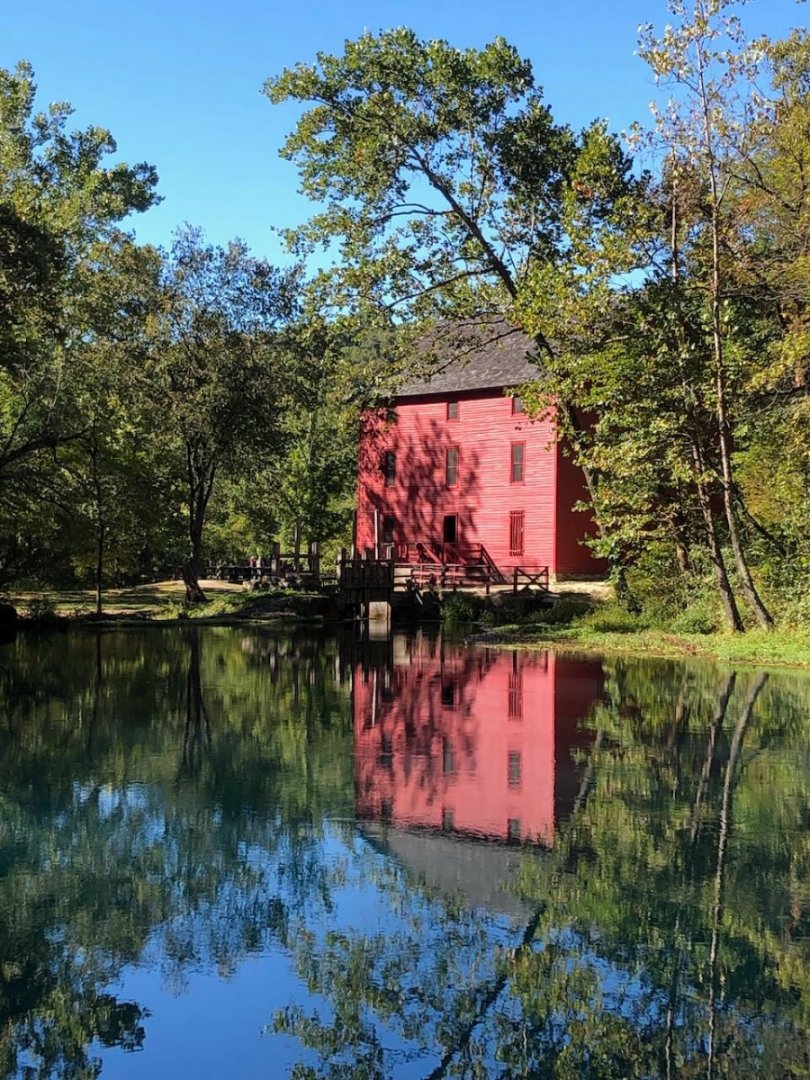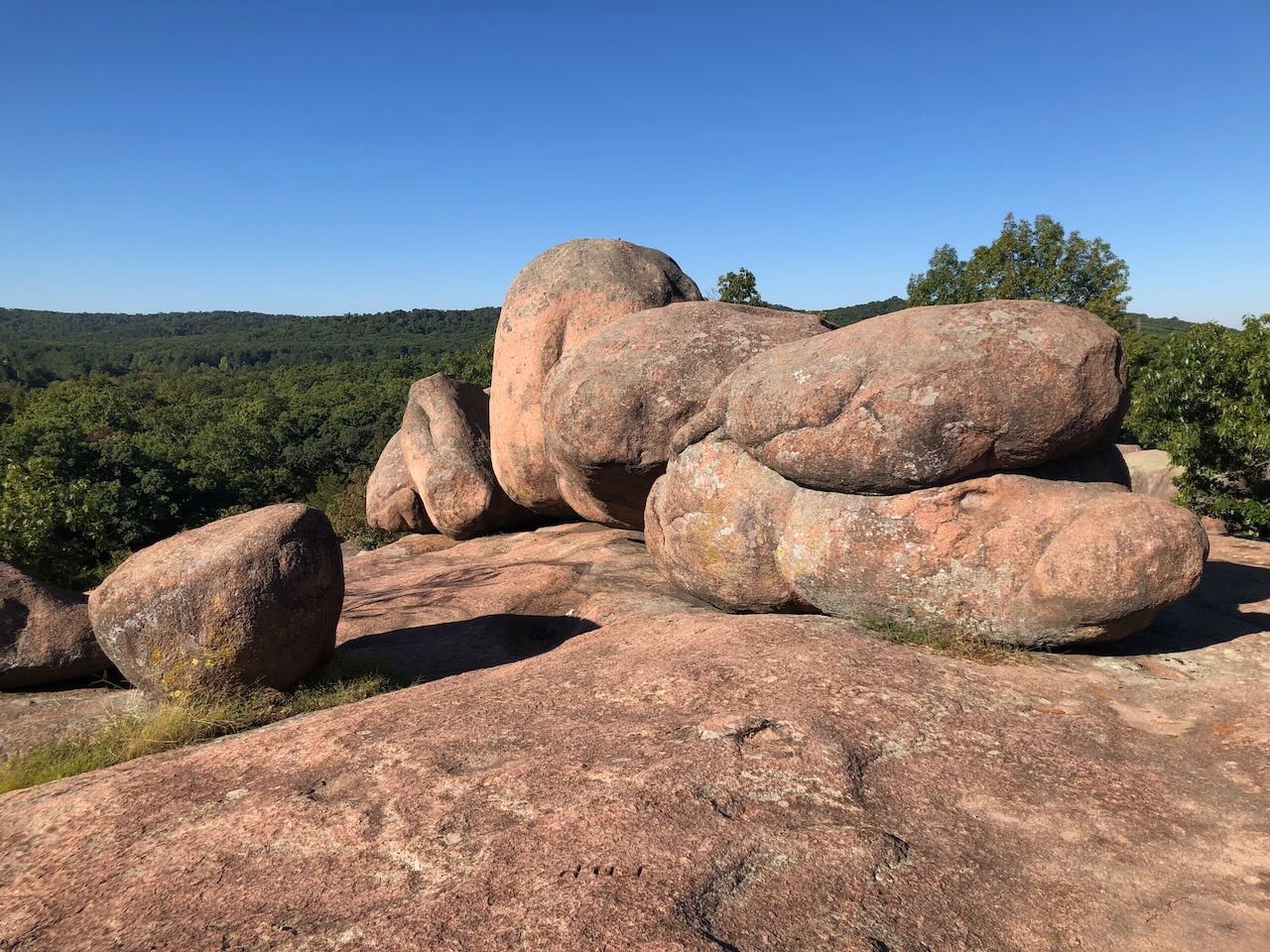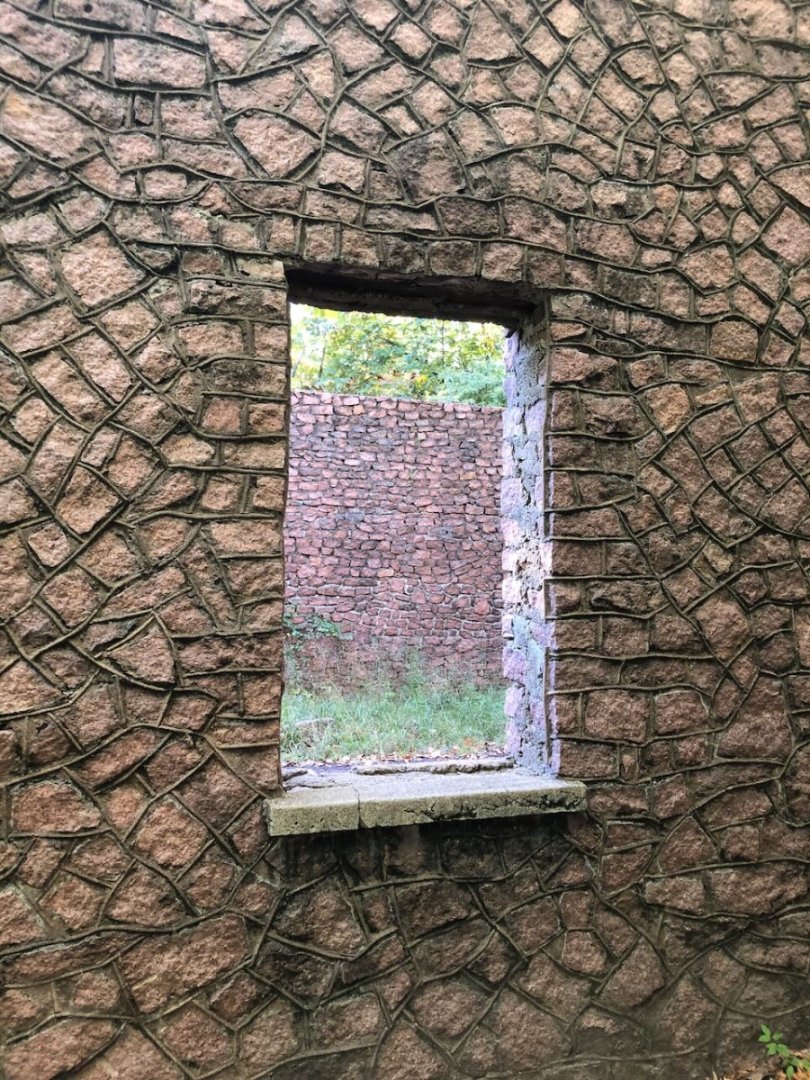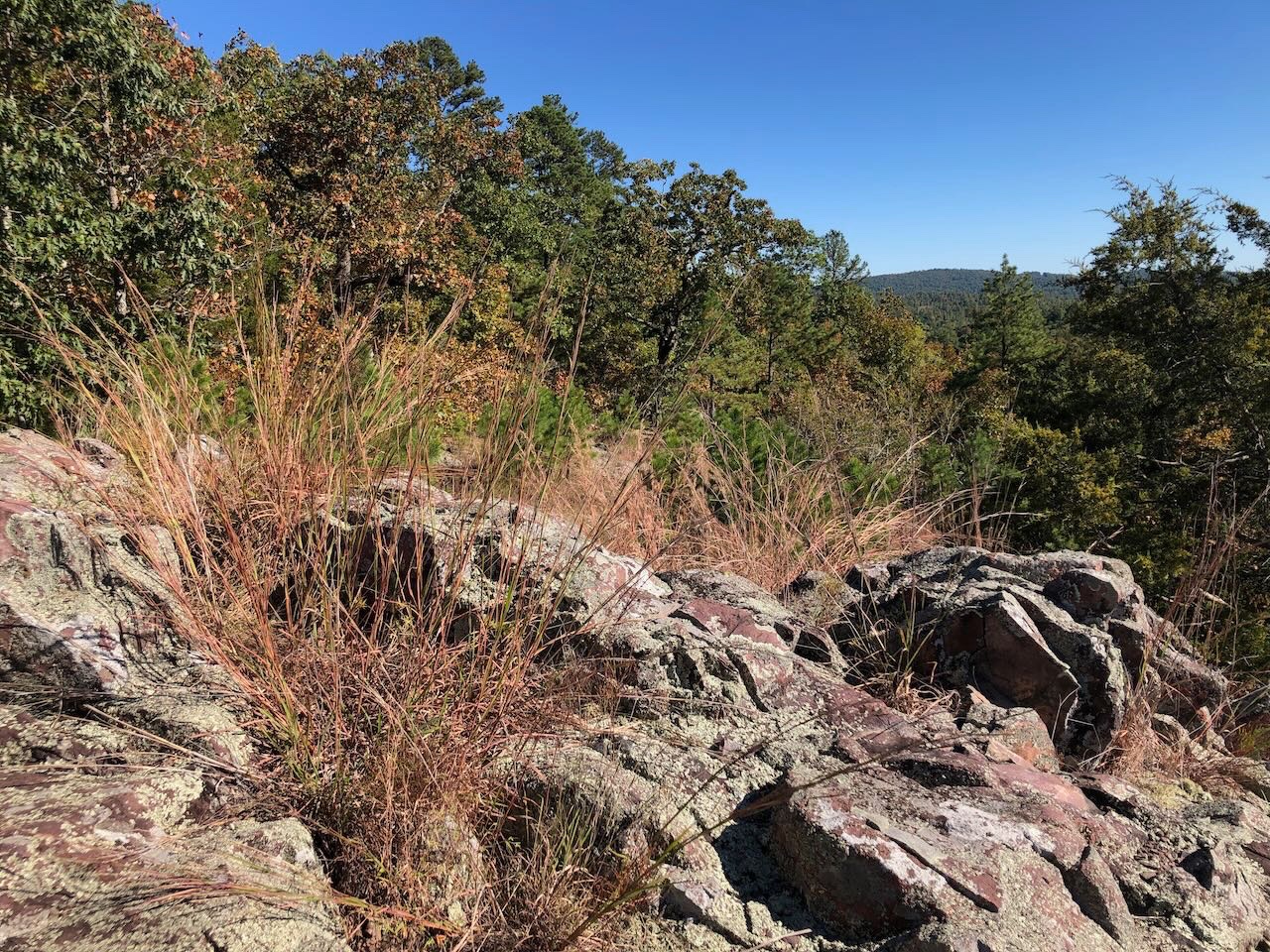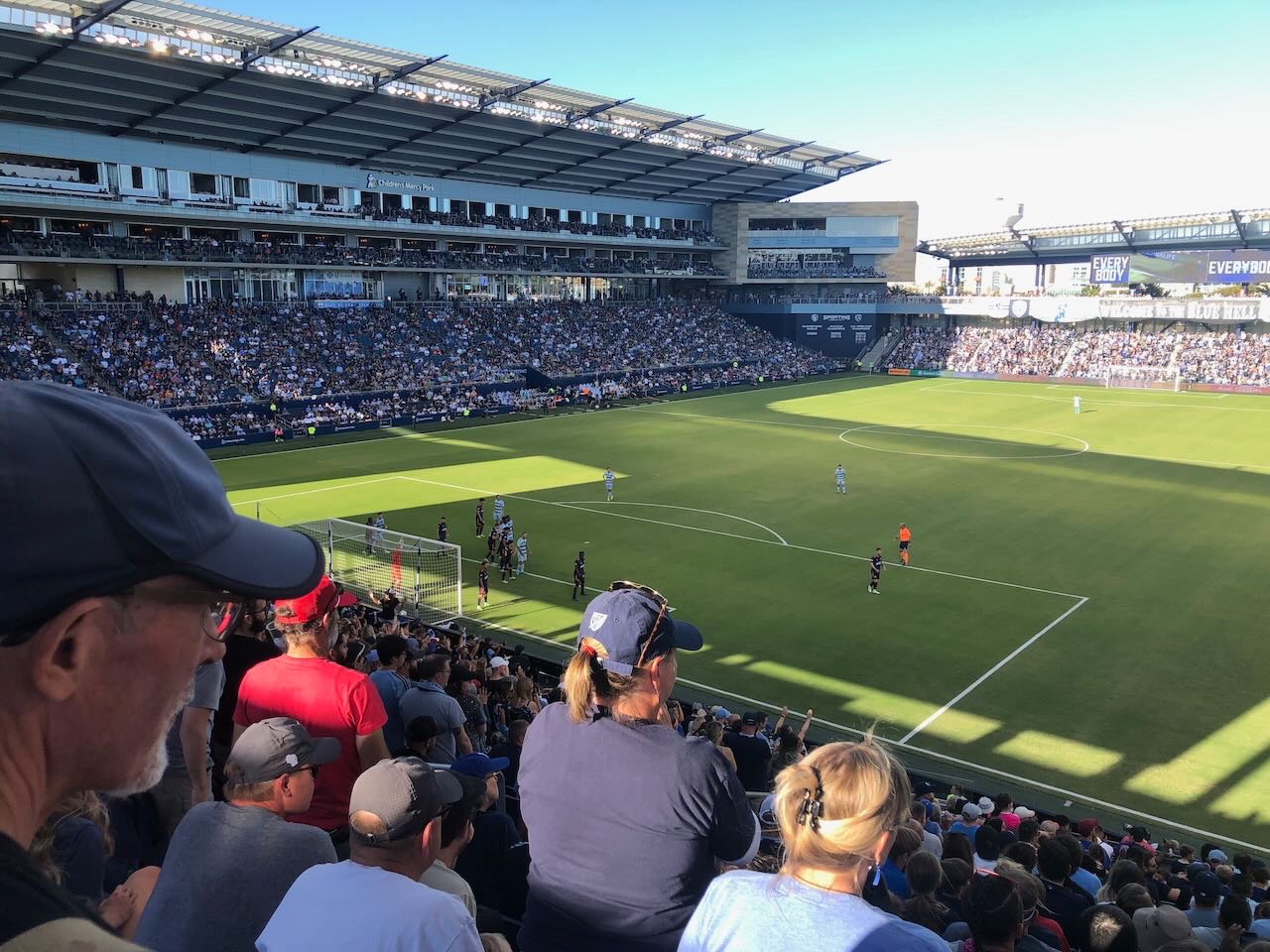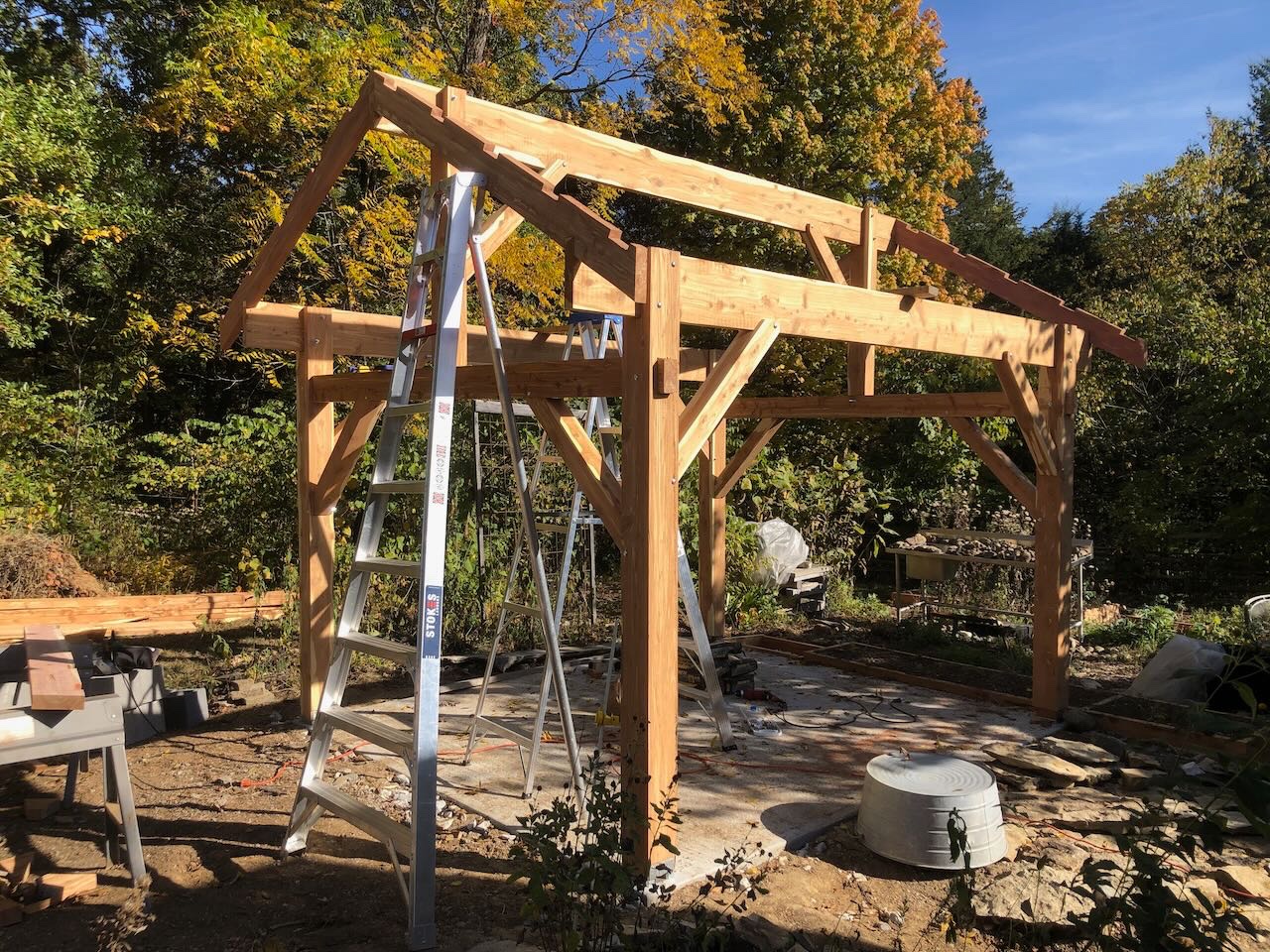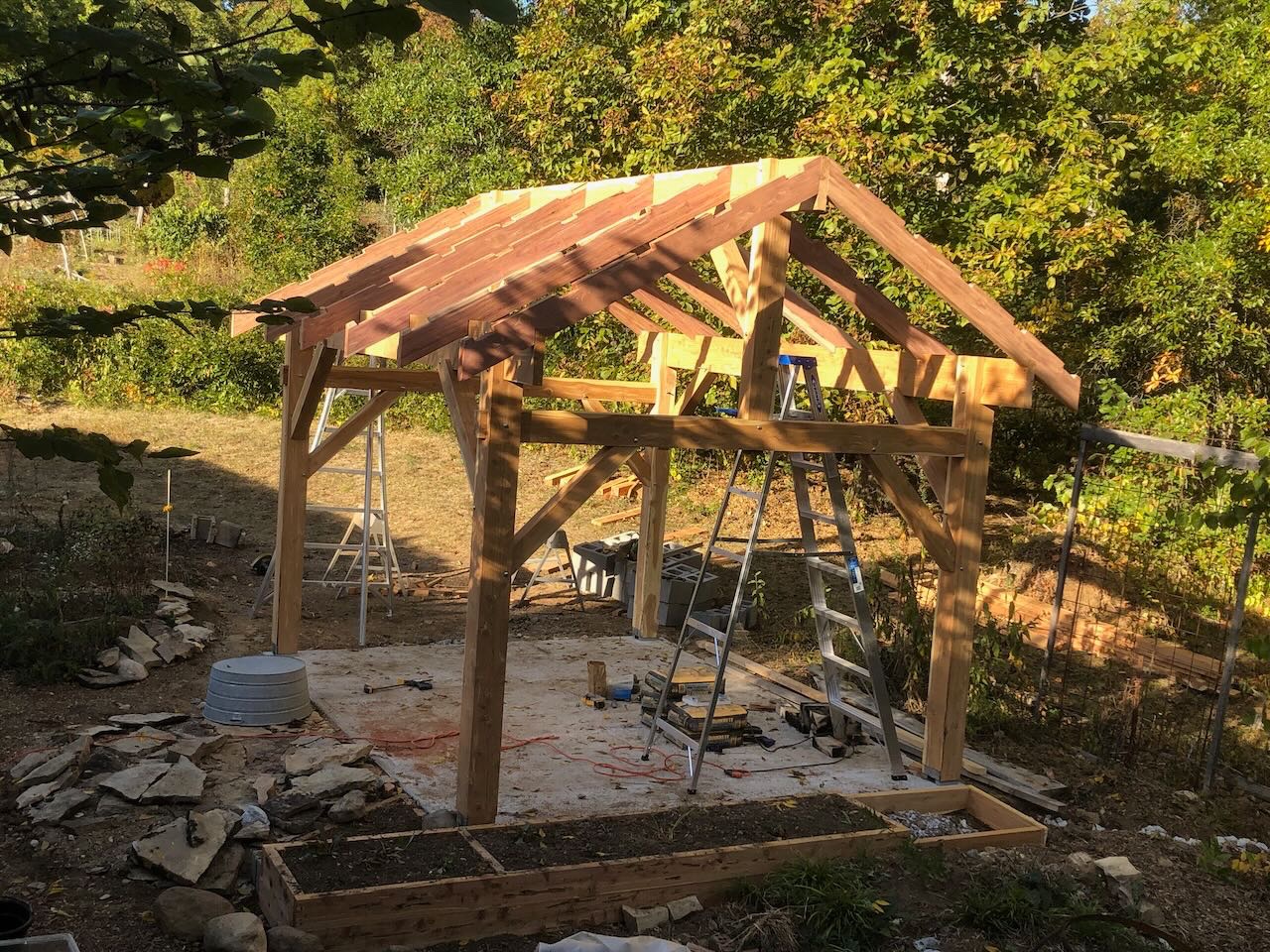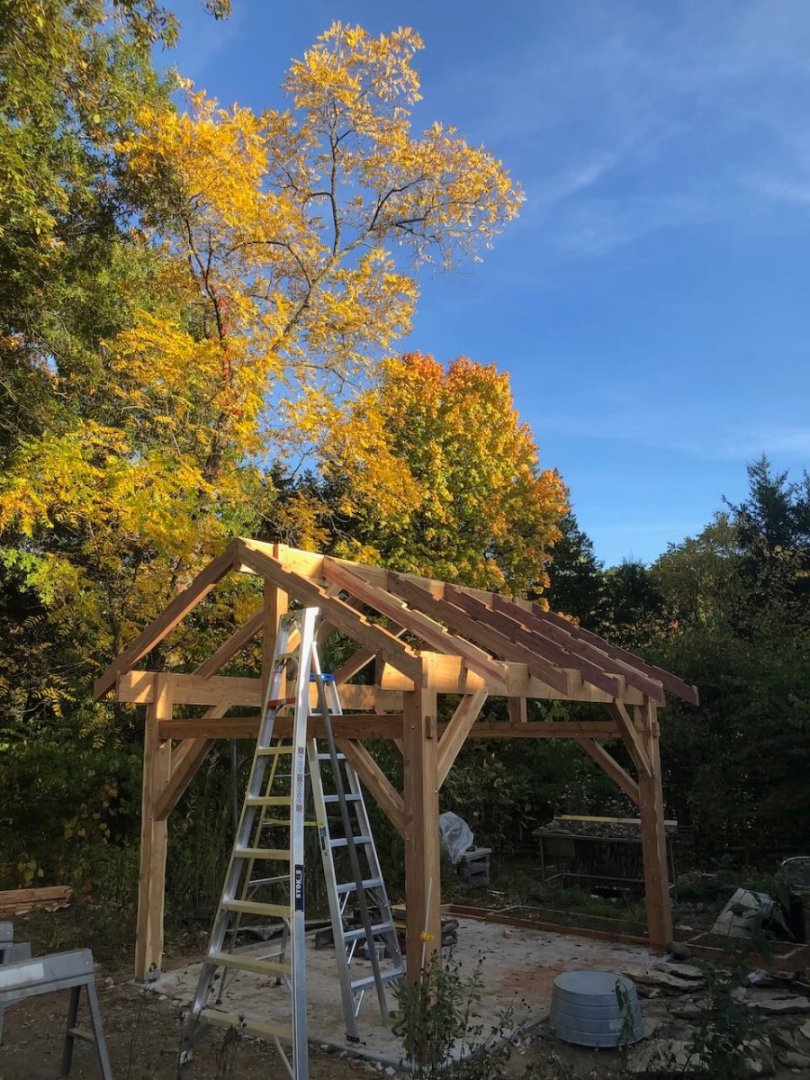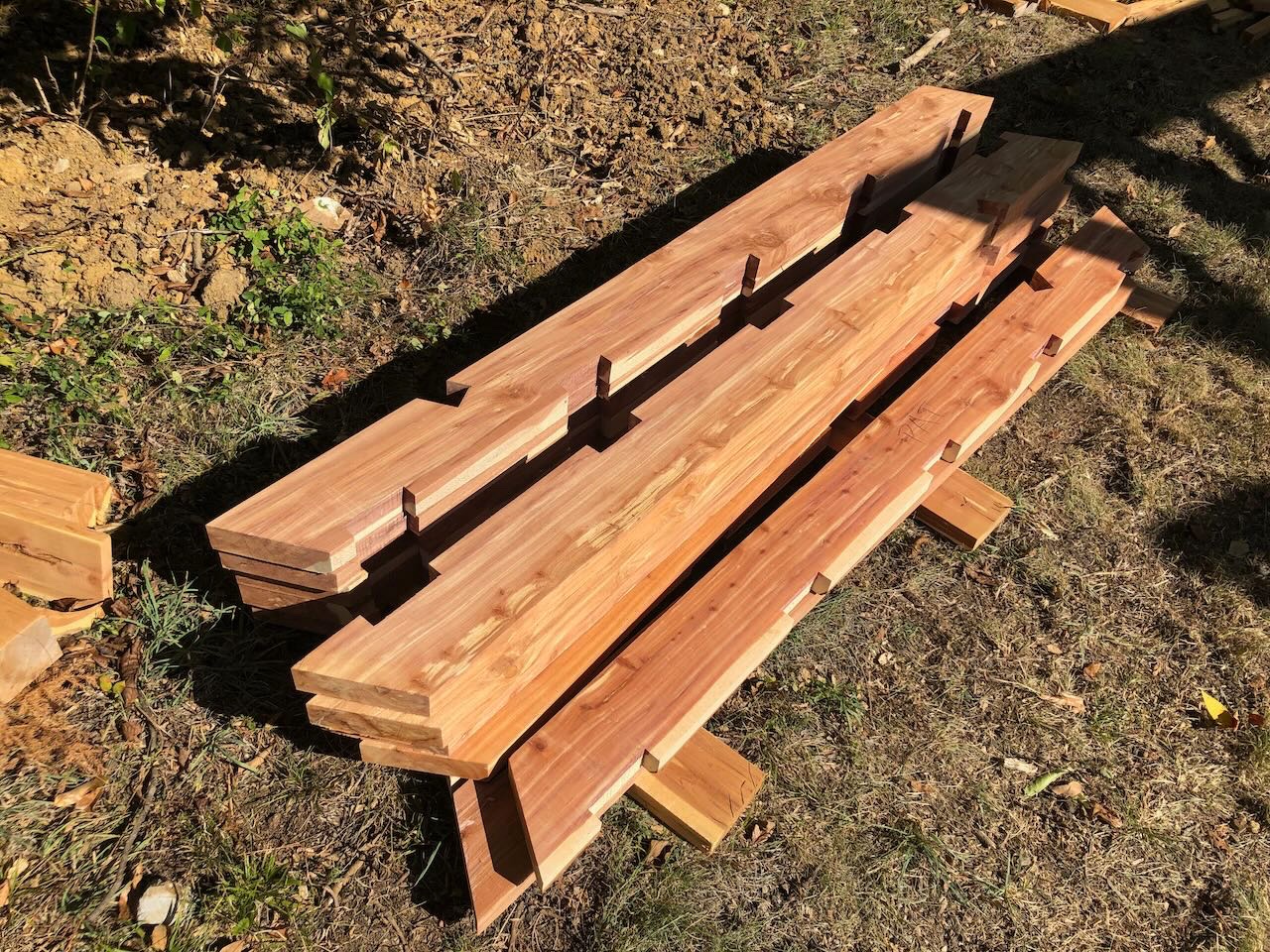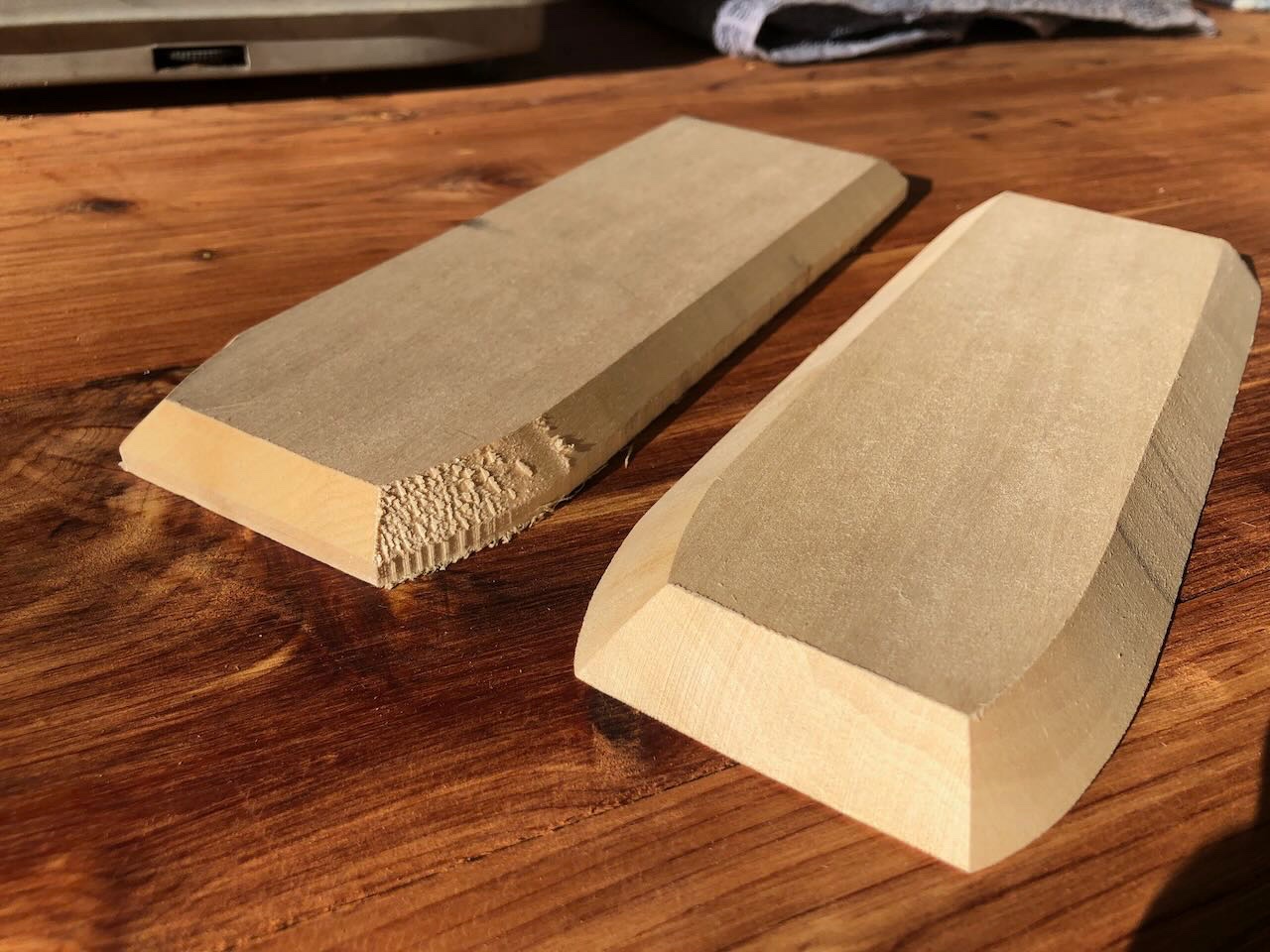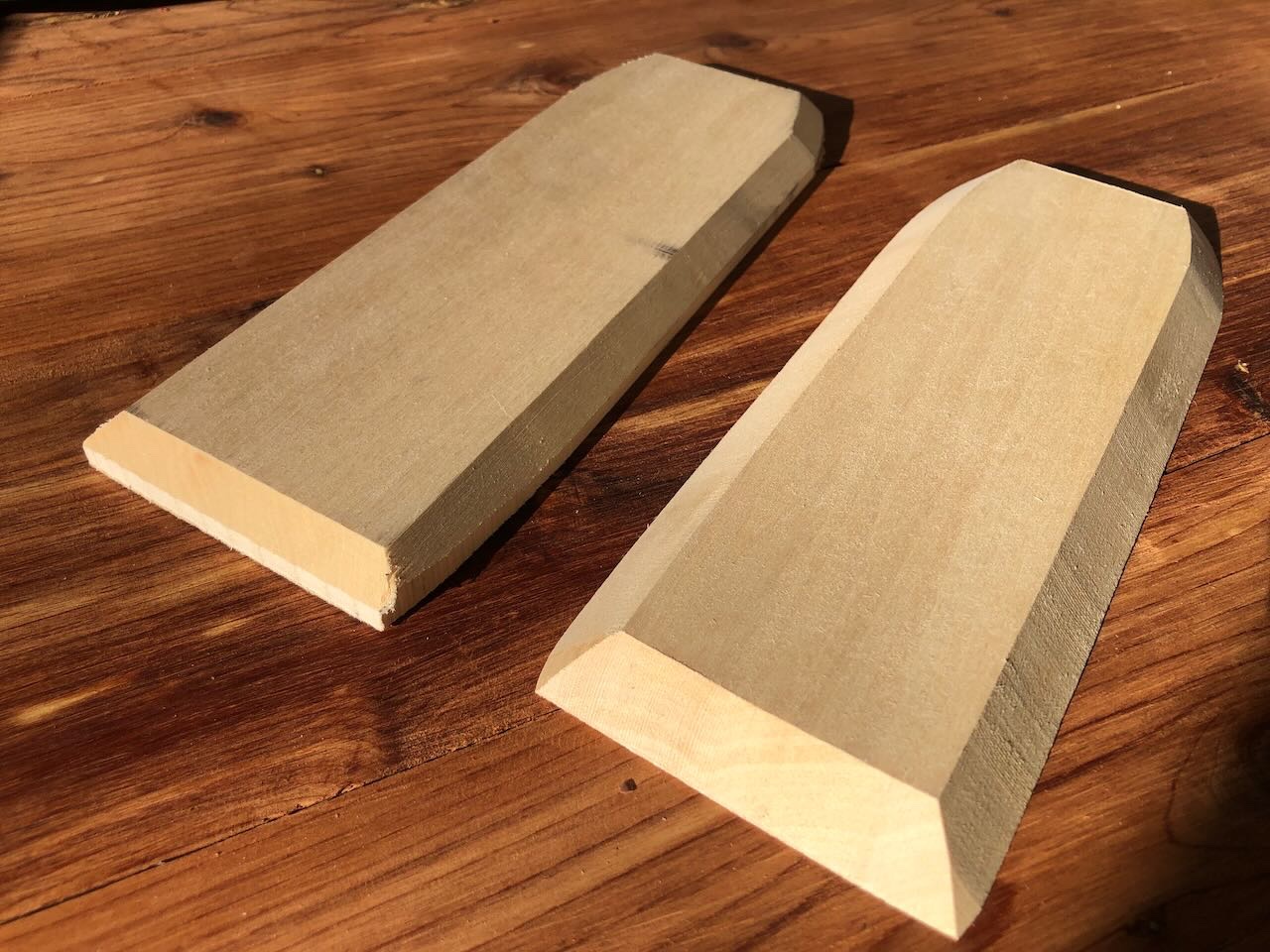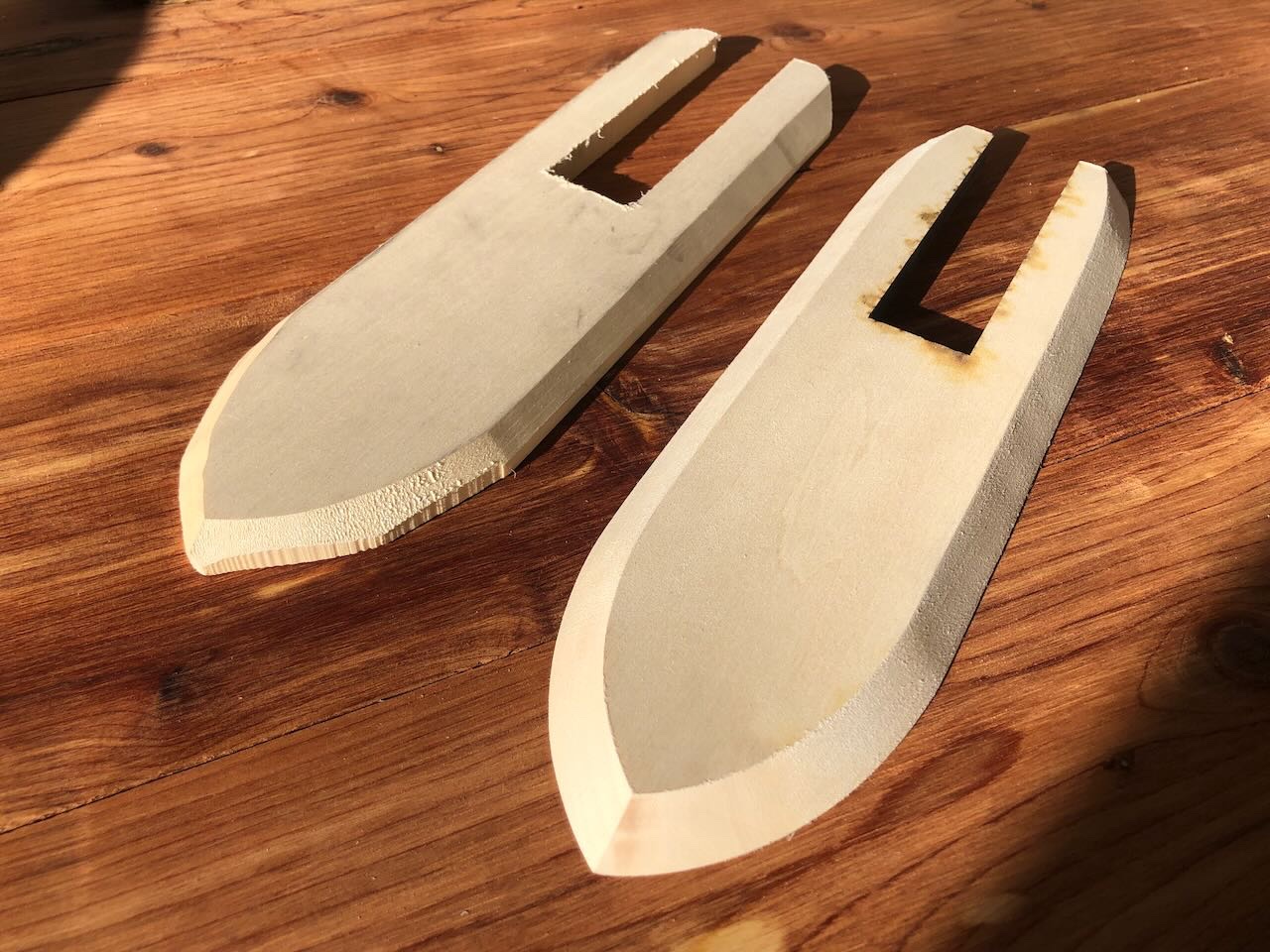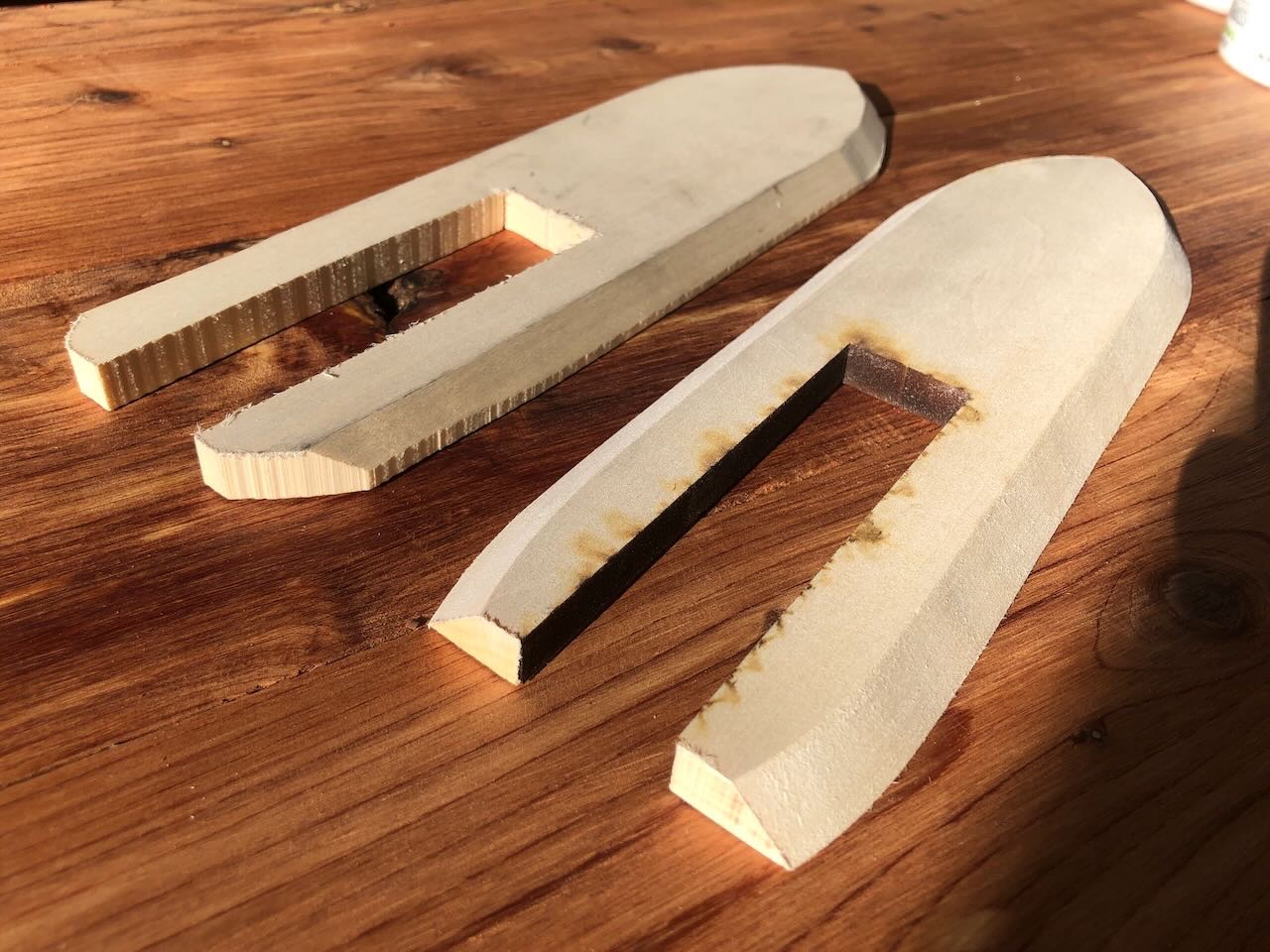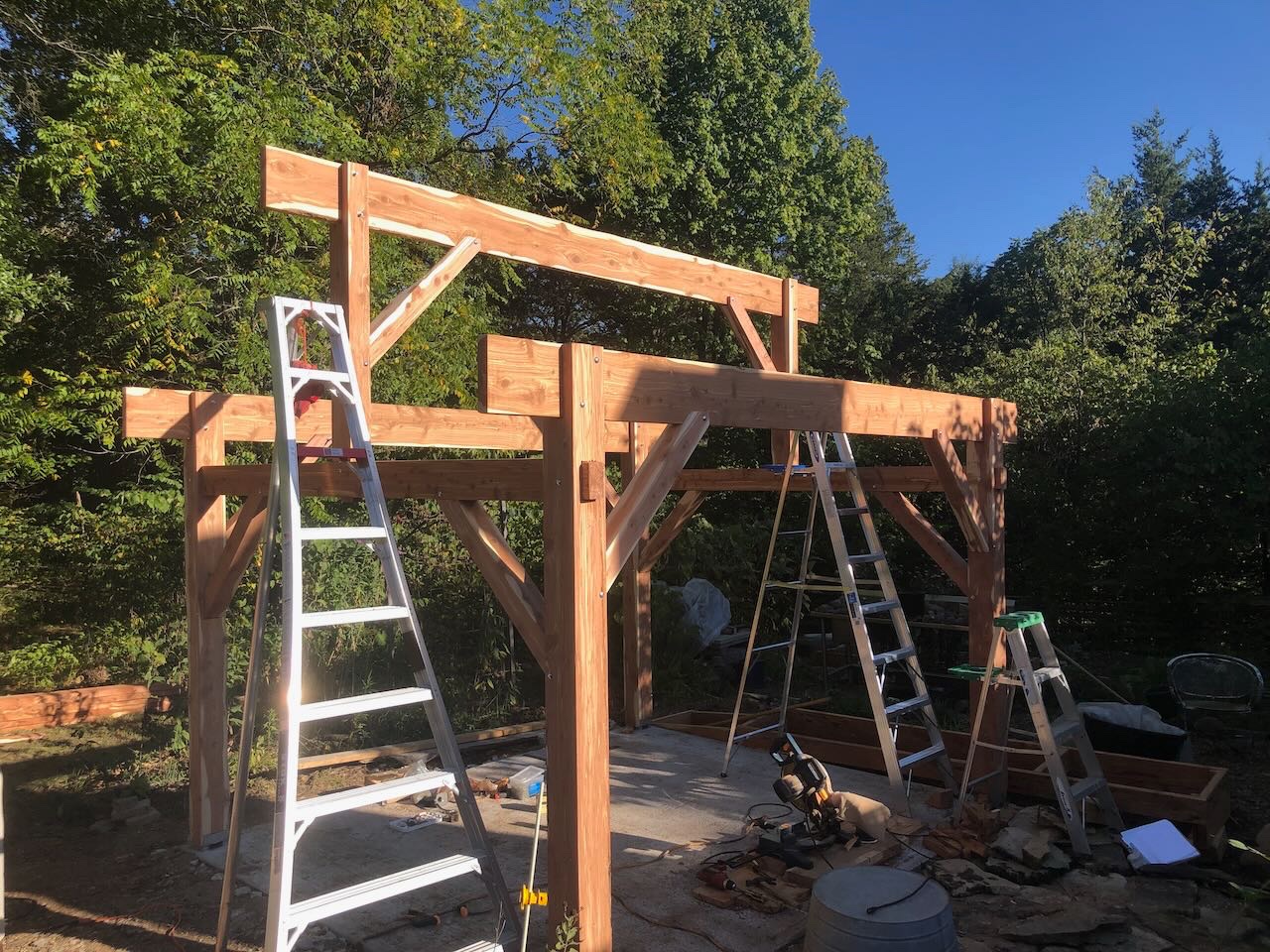-
Posts
3,467 -
Joined
-
Last visited
Content Type
Profiles
Forums
Gallery
Events
Everything posted by Cathead
-
If you like steamboat art, check out Gary Lucy as well. I've found some detail oddities in his work, but the art itself is quite attractive and evocative.
- 238 replies
-
- Robert E Lee
- steamboat
- (and 3 more)
-
Have to add to the chorus of praise. That's superb and will be a fantastic model to gaze on for years to come. I remember admiring the built version of this kit at BlueJacket when I visited years ago, and it's really cool to see it competed so beautifully.
-
Catching up after 2 weeks away, nice progress and problem solving!
- 157 replies
-
- chaperon
- Model Shipways
-
(and 1 more)
Tagged with:
-

Timber-framed outdoor kitchen - Cathead - 1:1 scale
Cathead replied to Cathead's topic in Non-ship/categorised builds
Made a start on the pizza oven itself. First step was to build a concrete block foundation, over which a concrete hearth will be poured to support the oven itself. Loose-stacking blocks in the basic shape: Adding the angled support over the front gap. This allows access to the interior for firewood storage: Closeups of how I built the overhang. Two parallel steel angles spanning the gap, with concrete blocks set onto them: I ground away a notch on either side of the blocks so they'd sit on the steel angles with their tops flush with the other blocks: Overhead view. I carefully broke another block to fill the angle on either side: Next, I filled each corner with concrete, inserting rebar. These stick up a few inches to help anchor the hearth onto the foundation: It'll be a few weeks before I'm able to pour the hearth. Not only will I be very busy, but we need a stretch of warm weather for the hearth concrete to set properly. Look for more updates in mid-November, hopefully. Thanks for reading! -
Yeah, I've been there on tasks that just. will. not. go. right. Well done to persist through. I like the rudder boxes, too, as you say they're good at fooling the eye into belonging there.
- 157 replies
-
- chaperon
- Model Shipways
-
(and 1 more)
Tagged with:
-
Great to see your interest in understanding how things actually worked, I'm the same way. Can't just build blind, want to actually understand.
-
So I feel I owe an apology to all those who have signed up for this: I'm afraid I jumped the gun in starting this log. I thought I'd find more time to work on the project but it's just not happening. Given my upcoming schedule I don't think I'll be able to work on it until sometime in November. Very sorry to bait-and-switch; I'm disappointed too! But I think I'll do a better job if I can actually focus on it, and right now (and through the next 3-4 weeks) there's just too much else going on for that to happen.
- 113 replies
-
- Cairo
- BlueJacket Shipcrafters
-
(and 1 more)
Tagged with:
-

Timber-framed outdoor kitchen - Cathead - 1:1 scale
Cathead replied to Cathead's topic in Non-ship/categorised builds
The roof is on! I would have updated this last night, but after finishing the roof I went up to harvest pears in our orchard and was stung on my left palm by a yellow jacket. The hand swelled up badly and felt like someone had driven a nail through it. Even this morning it's mostly unusable, being painful, stiff, and curled into a claw-like form. It's not getting any worse and should go down over the next day or two, but it's making me frustratingly impaired right now. Same hand as my last injury, so lots of unwelcome deja vu. In theory my next step is to add gutters but that'll have to wait now since I have no grip strength in one hand. So in lieu of any updates on that front, here's a photo of the offending pears and a wider shot of more fall colors from the upper orchard. The near tree is a peach, and the pear and apple trees are mostly obscured behind a line of sumac. If you look closely you can see the huge teepees of bird netting that are required to get fruit to harvest here; birds destroyed hundreds of pears before we finally wrapped the trees (an awful job on a very muggy late summer day). Thanks for following along. -
@rcmdrvr I think I found the source of your problem. Reading ahead in the instructions, at your stage (page 8 ) they have you pre-drill mounting holes for the cannon, 1/4" deep as you said, but they don't say anything about mounting the cannon at this time. They're just getting the hull ready for later detailing. You don't actually mount the cannon until page 16, where it says "trim [the cannon] as necessary so that the bottom of the muzzle protrudes about 1/8" from the casement, and glue it in place". This makes sense as mounting the cannon this early is just asking for them to get knocked askew during other early building. It would probably have been good for the instructions to clarify that the cannon don't get added at this step, but it's also a good idea to read all directions first! It also doesn't hurt to keep checking against the box imagery and other photos, like doing a puzzle, to make sure things seem right. We've all been there, it's no big deal. Is it possible to remove the cannon and trim them down for later re-installment?
-

Timber-framed outdoor kitchen - Cathead - 1:1 scale
Cathead replied to Cathead's topic in Non-ship/categorised builds
Ken, Alley Spring Mill was built in 1894 but has been in good condition for a long time. The site became a Missouri state park in 1925 and eventually was turned over to the National Park Service when Ozark National Scenic Riverways was formed in the 1960s. Here are the results from a partial day of work. I cut and installed all the purlins on both sides; note the brilliant fall colors on both maple and walnut in afternoon sun. And if you look close in that photo you see that I got started on the roofing as well. I cut metal roofing panels to length using a circular saw. These went up pretty quickly. I got most of one side done before it was time to stop and make dinner. Here you can also see how this will fit nicely with the house itself, since I'm using the same panels as are on the house (making use of leftovers). Here are a couple neat photos Mrs. Cathead took toward the end of the day. She saw pretty clouds behind me, and though I'm somewhat obscured, they have an artistic feel. The second one shows more fall color developing here. Thanks for looking in, more progress should occur in coming days. -

Timber-framed outdoor kitchen - Cathead - 1:1 scale
Cathead replied to Cathead's topic in Non-ship/categorised builds
And for those interested, and since the rules are looser here in Shore Leave, here are a few photos from our quick trip down into the Missouri Ozarks. Canoeing along the spring-fed Current River within the Ozark National Scenic Riverways, including the wonderful Cave Spring, accessible by canoe. Alley Spring Mill, one of the most well-known historic sites in the Ozarks: Otters playing in the clear waters of Round Spring: Tumbling waterfalls; deep, clear water along the Black River; and prairie grasses on a ridgetop glade, at Johnson's Shut-Ins State Park: Fabulous granite formations and a granite-walled enginehouse from an old quarrying railroad at Elephant Rocks State Park: And technically not the Ozarks, but part of our recreational reward nonetheless, a Major League Soccer game in Kansas City, in which a dominant home win eliminated one of our greatest rivals from playoff contention. My stepfather's back home now, so it's up to me and Mrs. Cathead to finish the rest of this project! -

Timber-framed outdoor kitchen - Cathead - 1:1 scale
Cathead replied to Cathead's topic in Non-ship/categorised builds
And the rafters are installed. Here they are fully notched and ready to go: I started with the outermost pairs: Then worked my way inward, to help ensure everything lined up ok. A few had to be adjusted to fit, but nothing major. Here's the finished rafters: And here's a shot in the other direction with a nice maple starting to turn: -
I read that book, too, and had the same thought that the ship would make an interesting modeling project. It'll be neat to follow along on this. I enjoyed the book overall, though it was pretty clear the author knew nothing about nautical affairs and hadn't bothered to run the book by anyone who did. But the history itself was interesting.
-
Thanks, Phil! Just a quick update, as I've been away from home for the past week. But the replacement hull/casement parts promised by @MrBlueJacket arrived, and boy do they make a difference! They're cut much more crisply, at the proper angles, and essentially answer most of the questions I posed earlier because now it's obvious how to shape them. So thanks for that quick response; errors happen in manufacturing and it's no big deal since I've got the finished parts now. Here are two side-by-side comparisons of the old flawed and new correct hull: And same for the casement: Now I'm excited to get back to this sometime next week, since I can see a clear path forward with these parts. I also updated the earlier part of the log, so as not to scare off any readers who see those old parts. Also, be sure to check out the other new Cairo build log by @rcmdrvr, who's making rapid progress so far.
- 113 replies
-
- Cairo
- BlueJacket Shipcrafters
-
(and 1 more)
Tagged with:
-
Thanks for starting this! You've shot ahead of me as I've been out of town most of the week, so now I can use you as a trailblazer. Looks like you got the right-shaped hull and casement pieces, unlike the oddball pieces that showed up in my kit (and that BlueJacket quickly replaced). Keep up the good work.
-
Lovely! A pride-worthy endeavour. I hope you enjoy viewing it for many years to come, and thanks for sharing your work with us.
- 104 replies
-
- Bluejacket Shipcrafters
- smuggler
-
(and 1 more)
Tagged with:
-

Timber-framed outdoor kitchen - Cathead - 1:1 scale
Cathead replied to Cathead's topic in Non-ship/categorised builds
Another productive day, but only one image. After assembling most of what we'd pre-prepared, it was back to manufacturing. My stepfather spent much of the day carefully setting up a jig to precision-cut all the rafters so they'll drop nicely onto the beams, and finished cutting them as the day ended. I got all the longitudinal angle braces finished and installed; these definitely had some quirks and took some adjustments to fit right. It doesn't look all that different overall, but it's another day closer to completion. We had various other friends and neighbors stop by to help out and socialize; all weekend has been like a grand old neighborhood barn-raising with a nice community of people. Work will stop now for a week, as the reward for a week of hard work is a week of hiking/floating/sightseeing in the Missouri Ozarks and a quick trip to Kansas City. So I won't be getting back to this until early October. But the building is now nice and strong and can wait quietly for me to return. Thanks for reading, take care, looking forward to being able to update again in a week or so. -
@rcmdrvr Welcome! I find build logs to be a really useful resource, both for advice and help, but also for motivation. Knowing others are paying attention to, and care about, my work, helps keep me going and helps discourage sloppiness.
- 113 replies
-
- Cairo
- BlueJacket Shipcrafters
-
(and 1 more)
Tagged with:
About us
Modelshipworld - Advancing Ship Modeling through Research
SSL Secured
Your security is important for us so this Website is SSL-Secured
NRG Mailing Address
Nautical Research Guild
237 South Lincoln Street
Westmont IL, 60559-1917
Model Ship World ® and the MSW logo are Registered Trademarks, and belong to the Nautical Research Guild (United States Patent and Trademark Office: No. 6,929,264 & No. 6,929,274, registered Dec. 20, 2022)
Helpful Links
About the NRG
If you enjoy building ship models that are historically accurate as well as beautiful, then The Nautical Research Guild (NRG) is just right for you.
The Guild is a non-profit educational organization whose mission is to “Advance Ship Modeling Through Research”. We provide support to our members in their efforts to raise the quality of their model ships.
The Nautical Research Guild has published our world-renowned quarterly magazine, The Nautical Research Journal, since 1955. The pages of the Journal are full of articles by accomplished ship modelers who show you how they create those exquisite details on their models, and by maritime historians who show you the correct details to build. The Journal is available in both print and digital editions. Go to the NRG web site (www.thenrg.org) to download a complimentary digital copy of the Journal. The NRG also publishes plan sets, books and compilations of back issues of the Journal and the former Ships in Scale and Model Ship Builder magazines.



